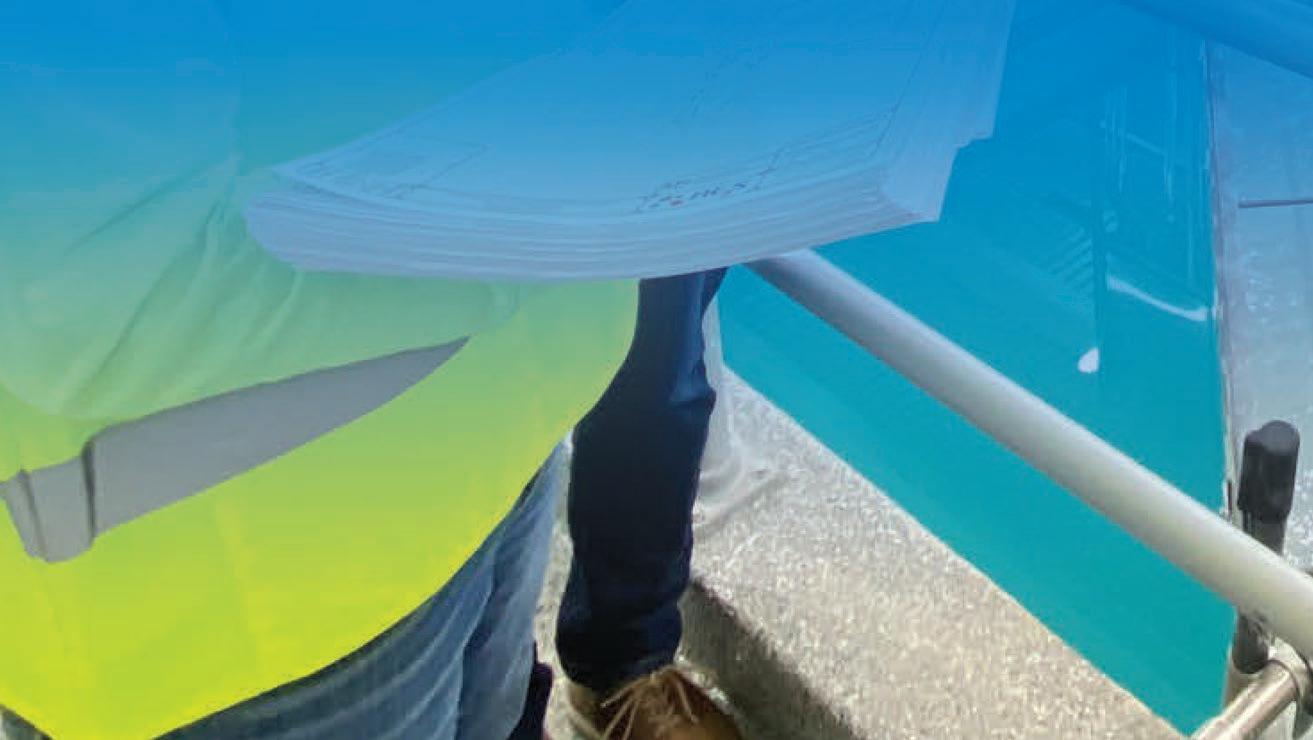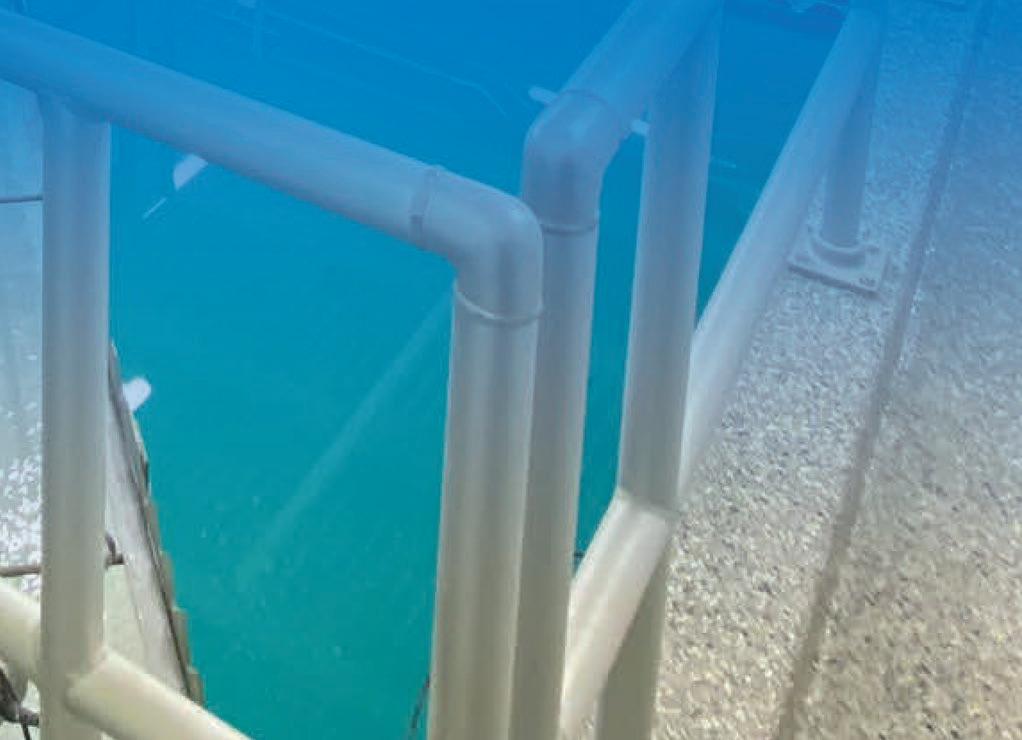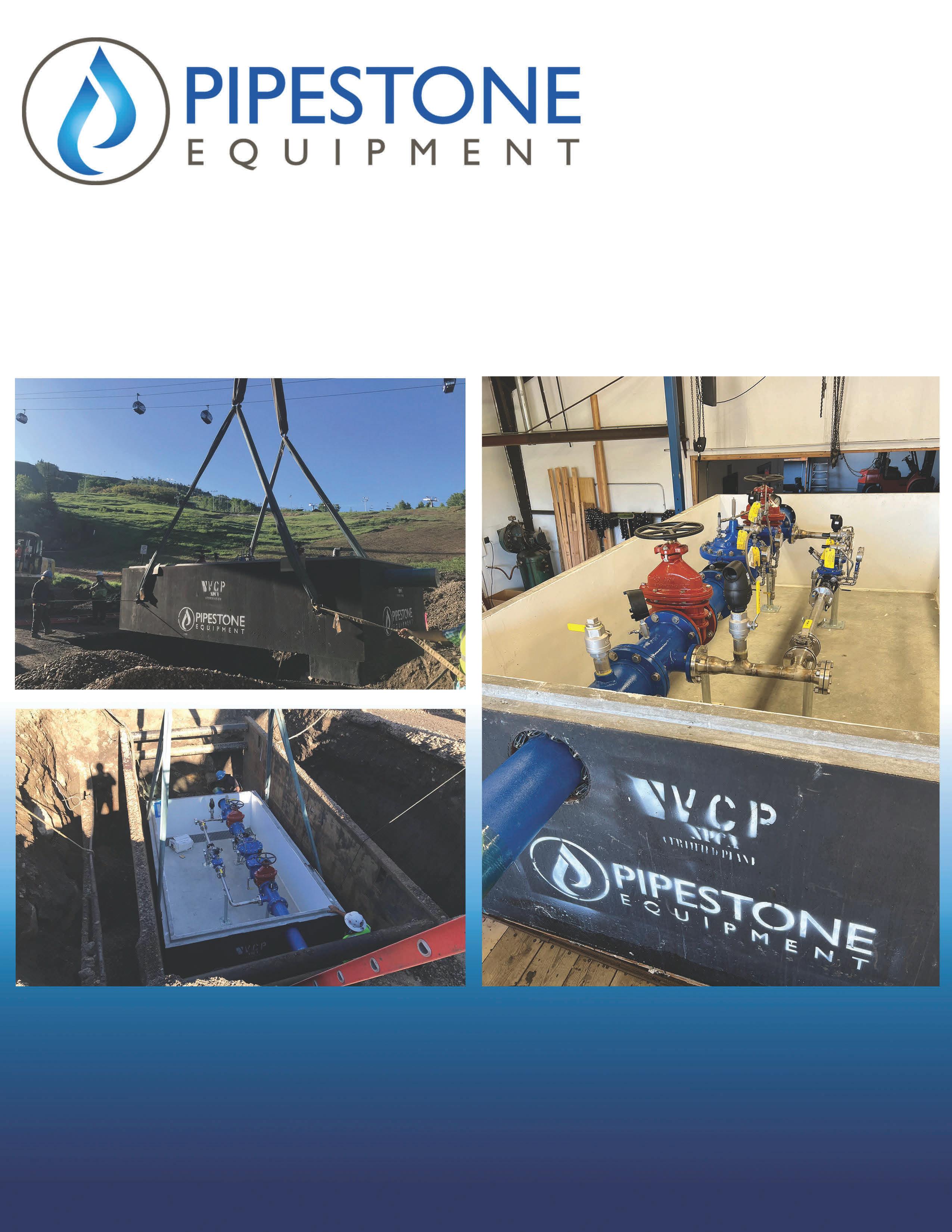






Conquer your engineering and construction challenges with our design-build solutions.





















Conquer your engineering and construction challenges with our design-build solutions.















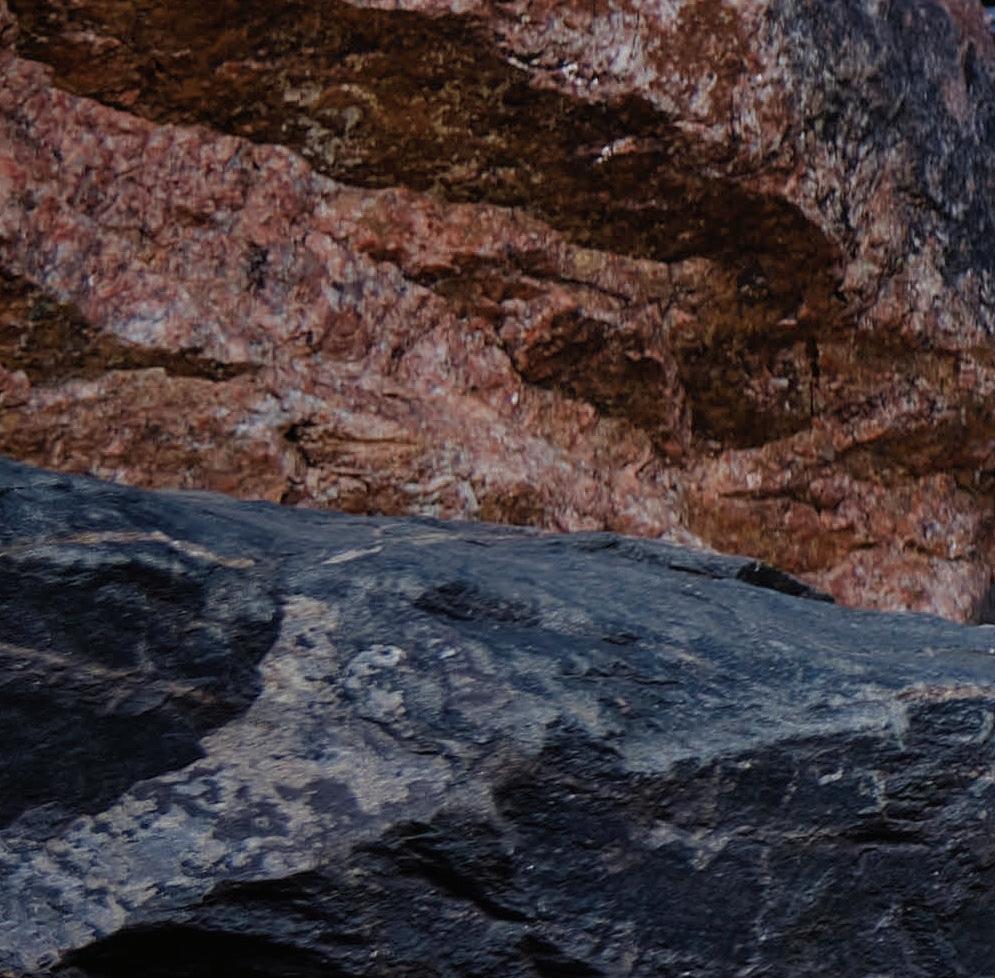
Rick Huggins is passionate about delivering crucial infrastructure projects in the state he loves and calls home. With his engineering R&D and operations experience — and the backing of a nationwide firm with over a century’s worth of service — he’s well equipped to handle the toughest challenges.
Clients trust Garver to represent their interests and provide practical solutions. Because we live here, we work here, and we care about Colorado’s future.
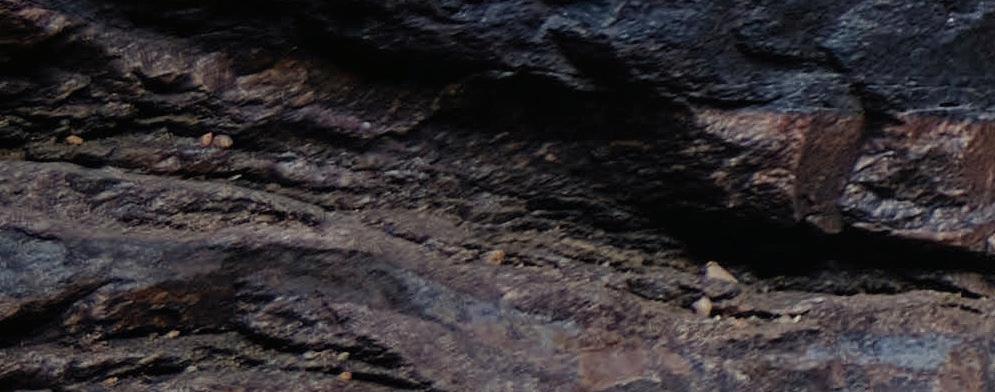
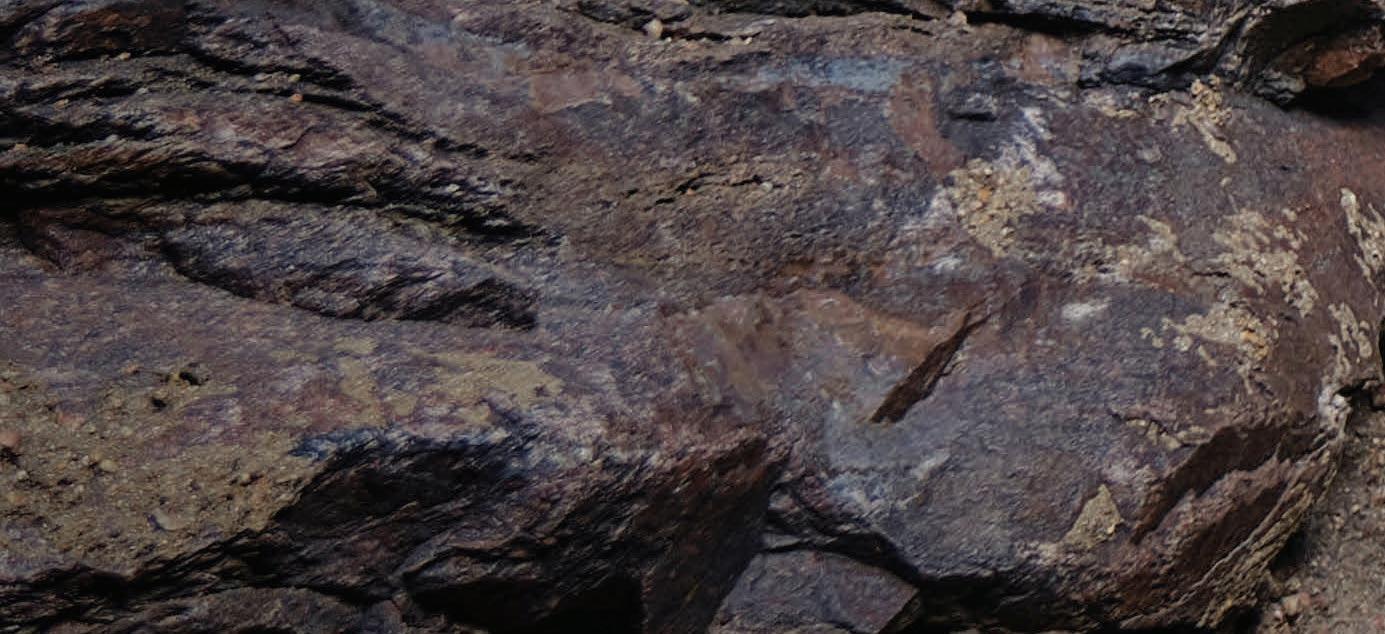

Ph.D., PE | Colorado Regional Water Business Team Leader

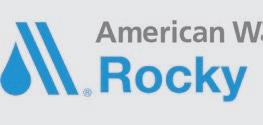


Rocky Mountain Water Magazine Group
The following volunteers support RMSAWWA and RMWEA with content collection, management, editing, and reviewing the magazine.
BLAIR CORNING bcorning@englewoodco.gov
ANDREW DUGAN andrew.dugan@waterwrites.co
HANNAH FODOR hfodor@carollo.com
RORY FRANKLIN rfrankli@auroragov.org
KARI LARESE klarese@highlsandsranch.org
RMSAWWA Communications Committee
KARI LARESE, Co-Chair klarese@highlandsranch.org
RORY FRANKLIN, Co-Chair rfrankli@auroragov.org
ERIN RIDOLFO, eNewsletter Editor eridolfo@rmsawwa.org
RMWEA Communications Committee
ELIZABETH DEWAARD, Chair edewaard@englewoodco.gov
JORI NELSON, eNewsletter Editor jnelson@waterrf.org
NATALIE COOK, eNewsletter Reviewer ncook@auroragov.org
ANDREW DUGAN, eNewsletter Reviewer andrew.dugan@waterwrites.co
Tel:
Fax: 866-985-9799
Managing Editor: Mathias Leiendecker
Marketing Manager: Chad Morrison
Design/Layout: Jackie Magat
Advertising Coordinator: Sabrina Simmonds













Through smart infrastructure and high-performance buildings, we’re helping our clients push open the doors to what’s possible, every day.
hdrinc.com | Colorado, New Mexico, Wyoming

Charlie Leder, PE, RMSAWWA Chair, Senior Associate at Hazen and Sawyer
With my time as RMSAWWA chair having drawn to a close, I’m reminded of the honor and privilege it was to serve you. Among other duties, I enjoyed opportunities to write a letter to members in each issue of Rocky Mountain Water Magazine. As a former chair, I’m thankful and have benefitted from the strong leadership of my colleagues on the RMSAWWA Board of Trustees and our section staff led by Executive Director, Devon Buckels. Their leadership and support, along with all the dedicated support work by volunteers and various committee chairs, led to many noteworthy accomplishments between the Rocky Mountain Water Conference held in Loveland in 2023 and more recently in Keystone in 2024.
One of these accomplishments was developing a 5-Goal Strategic Plan accomplished in February 2024 after two years of debating and discussions at winter and summer planning meetings run by the Board of Trustees. This strategic plan sets an overall program for strategy and specific tactics to achieve that will promote our section’s long-term sustainability and growth consistent with our by-laws and the needs of our members. It’s worth noting that we now have a collaboration policy that helps our section standardize what needs to be done to collaborate with RMWEA, state-based rural water associations, and other water sector organizations. Future efforts to work together with folks in other water sectors can now follow the guidelines established in the adopted collaboration policy.
In the overall strategic plan’s goal for member engagement and recognition, hats off to the work of Trustee Jason Palmer, other folks from Wyoming, and the Governing Documents Committee who helped develop roles and responsibilities for the newly formed Wyoming Water Committee. A special thanks to Alexis Spray of Green River, WY who volunteered to serve as the new Wyoming committee’s chair. It will be fascinating to see how this committee develops readily accessible knowledge management programs and seminar events to serve Wyoming-based AWWA members like those of the New Mexico Water Committee and the Coloradobased Action Now Committee.
The Action Now Committee continues its work in providing useful knowledge management tools and training to water system operators throughout Colorado as its continued focus
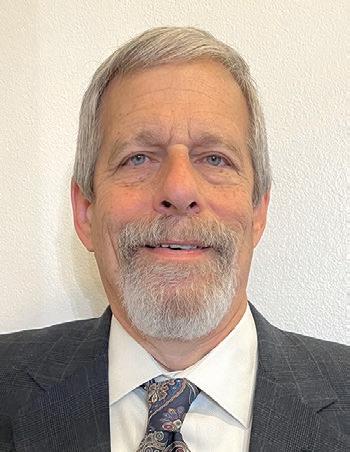

on member engagement. Action Now Committee members continue to provide full-day seminars to operators all around Colorado that reduce operator travel needs. Through August 2024, Action Now full-day seminars took place in Glenwood Springs, Sterling, Montrose, Canon City, Buena Vista, Trinidad, Durango, and Fort Collins with future seminars scheduled for La Junta and Grand Junction during the fall of 2024. With a little bit of luck, Action Now will explain to the Wyoming Water Committee what it takes to get great training in place in Wyoming that can reduce operator travel needs.
This issue of Rocky Mountain Water Magazine features articles on technology and innovation. If you have any interest in how to bridge gaps between the current states of water systems and how to make them more resilient in the future using a combination of advanced technologies, better interpersonal connections between utilities, and defining practical frameworks to promote adaptability to dynamic issues, then read the article about Unraveling Water System Reliance for 2040. In addition, the article Platte Valley Water Partnership Flows Forward describes how the Parker Water and Sanitation District and Lower South Platte Water Conservancy District approached effective ways to work together and improve their water system reliability.
Liz Carter and Melissa Bryant were former chairs at the respective RMSAWWA and Texas AWWA sections and are current co-chairs for the ACE25 Local Host Committee. No doubt, we already know that ACE25 will be held in Denver, Colorado from June 8-11, 2025.
There are lots of opportunities for RMSAWWA members to take a noteworthy role in planning and executing various ACE25 activities including arranging for local facility tours, various annual competitions including pipe tapping, hydrant hysteria, and meter challenge, developing a locally focused technical program, and developing focused activities for young professionals to name a few. No doubt many RMSAWWA members want a chance to play a role in making these ACE25 activities happen. Please remember that Liz and Melissa are both standing by, waiting for your call, and joining them in the many activities they are taking on for the Local Host Committee to ACE25.
Thanks to our section’s Water Treatment Committee for a successful workshop in May on pre-treatment, that critical step ahead of filtration with a focus on best approaches to remove total organic carbon and the downstream impact it has on disinfection and disinfection by-products and subsequent impacts on what may happen in the receiving water distribution system. The tour arranged by this committee for Thornton, Colorado was noteworthy and will be paralleled with yet another workshop on this topic scheduled for October 2024 and to be held at the Albuquerque Bernalillo County Water Utility Authority’s San Juan Chama Water Treatment Plant along with a tour of that 82 MGD facility. Please contact Cassia Sanchez at cassiasanchez@abcwua.org or
Andrea Song at song@cityofwestminster.us to join the upcoming October workshop and tour.
I look forward to continuing to serve the RMSAWWA section as past chair and continuing to support work on its Governing Documents Committee and New Mexico Water Committee.
Incoming chair Stephanie Elliot has been a great supporter and servant to our section as a former treasurer, our co-chair for the Rocky Mountain Water Conference, and participating in developing effective, sensible collaboration policies and procedures to use with comparable groups and members in RMWEA and other water sector organizations. I also welcome the role that Andrea Song will have for our section as its new director, which began June 11 at the end of ACE24 and continues through ACE27.
Lastly, what our section hopes to accomplish over the next 12 months will be a great training opportunity for Brett Pugh in his new role as RMSAWWA chair-elect. This will hopefully support what is planned for his second stint as a section chair, having formerly served that role for the Atlantic Canada Section. It will be amazing to see how he continues to work with extreme differences in daily climate and AWWA member water supply issues between places like Prince Edward Island and Labrador in Eastern Canada and the many arid regions throughout the Rocky Mountain Section. Perhaps Brett will also develop a “dry sense of humor” in this future role as chair-elect!

RECYCLED. RECYCLABLE.



CHOOSE SUSTAINABILITY. CHOOSE
DUCTILE IRON. A pipe isn’t just about moving water from here to there. It also needs to safeguard generations to come. Our ductile iron pipes are made from more than 90% recycled material and are 100% recyclable at the end of its service life. AMERICAN iron pipe is more than the superior long-term choice. Our pipe delivers toughness, superior performance, and lower life-cycle costs, which means AMERICAN also delivers on an ironclad promise to the future.
DUCTILE IRON PIPE FLOW CONTROL
INTERNATIONAL
SPIRALWELD PIPE
STEEL PIPE

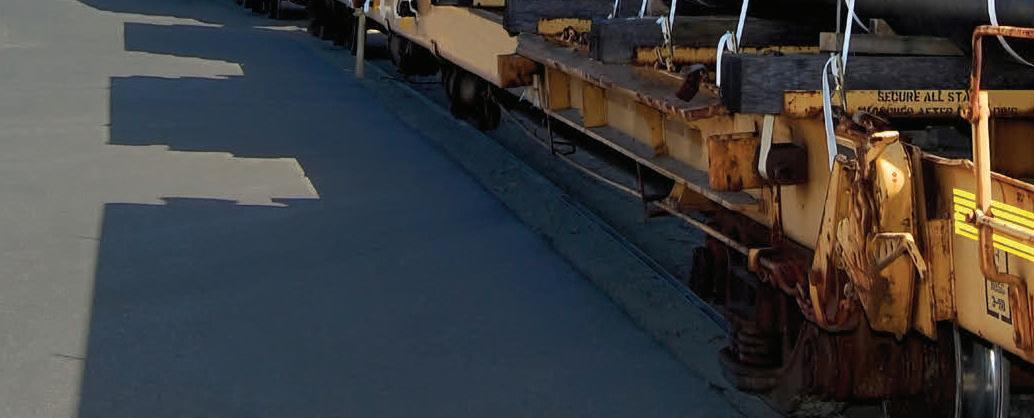











FROM THE RMWEA PRESIDENT
Bill Peretti, RMWEA President
As I write this final letter to you as the President of the Rocky Mountain Water Environment Association, I am filled with a sense of both reward and challenge that comes with serving in this role for the second time. The unwavering energy of the board, the strong connection with our membership, and the need to respond to various challenges have defined my tenure. Each of these aspects has contributed to an enriching and dynamic experience.
I want to extend a tremendous thank you and shout-out to the RMWEA Board and committee members. Your dedication, active participation in meetings, and outstanding leadership have been instrumental in driving our association forward. It is your commitment and hard work that have enabled RMWEA to achieve its goals and continue making a positive impact on water quality and environmental sustainability.

As I prepare to pass the baton, I am excited to introduce Clay Rahn from the City of Westminster as the next president of RMWEA. I am confident Clay will bring fresh energy and passion to the board. His vision and enthusiasm will undoubtedly lead RMWEA to new heights and continue the legacy of excellence that we have built together. Thank you, once again, for the opportunity to serve as your president. It has been an incredible journey, and I am deeply honored to have had the chance to lead such a dedicated and passionate community. I look forward to supporting Clay and witnessing the continued success of RMWEA.

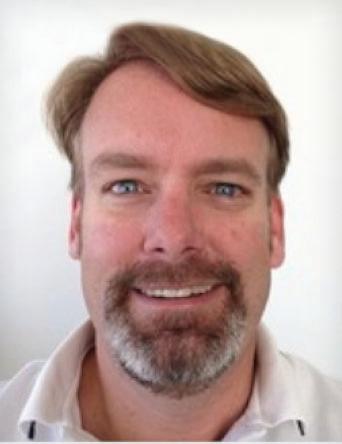
Thank you, once again, for the opportunity to serve as your president. It has been an incredible journey, and I am deeply honored to have had the chance to lead such a dedicated and passionate community. I look forward to supporting Clay and witnessing the continued success of RMWEA.
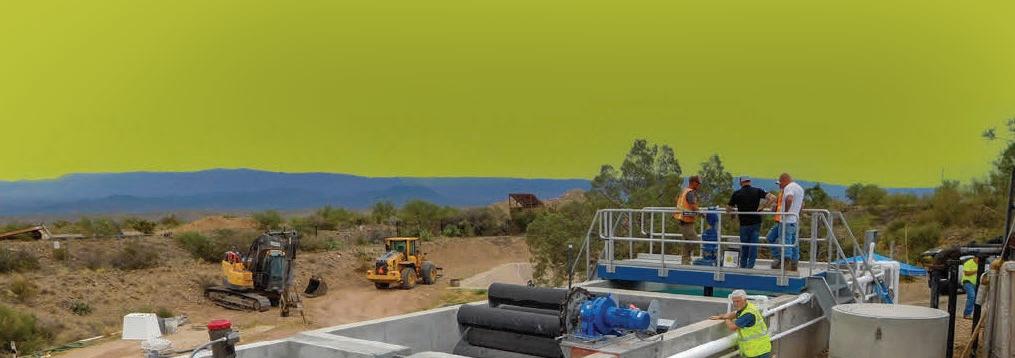


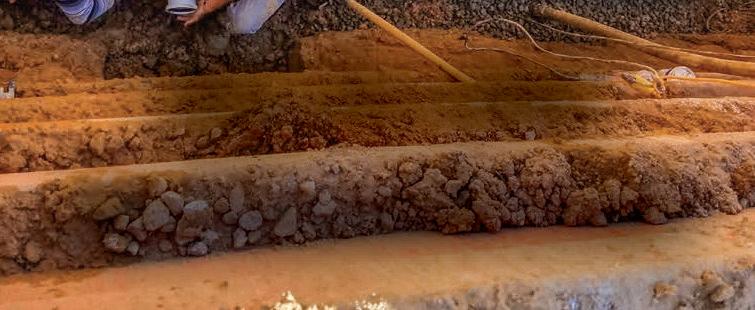












By Dixie L. Poteet, Steven A. Conrad, and Michael Altland
Water systems serve a vital role in communities by providing access to safe and reliable water supplies throughout dynamic times. Two overall goals for the state of water are to (1) Improve water security in the face of change and (2) Reduce vulnerability to water-related risks and hazards. Meeting these goals in response to widespread and diverse challenges faced by water providers requires strategic planning and collaborative solutions by leaders in the water sector.
The Unravelling Water System Resilience for 2040 workshop is one of a series that challenges leaders in the water sector to collaborate in defining resilience for scenarios set in the near future. Two prior workshops were held in 2020 and 2021 in workshops by the British Columbia Waste & Water Association (BCWWA) and the Canadian Water and Waster Association (CWWA). The purpose of this workshop, held as part of the Rocky Mountain Section of the American Water Works Association (RMSAWWA) 2023 Conference, was to help define water resilience for the RMS Risk and Resilience Committee and the water sector in general. The overall question participants were asked to answer was: “What is resilience and how does resilience apply to water systems?”
Prior to group work, participants were given an overview of the workshop and featured guest presentations on water resilience.
Dan Wcislo from Metro Water Recovery shared findings from the largest water resource recovery provider in the Rocky Mountain West to improve the quality of the South Platte River. Andrea Song from the City of Westminster presented lessons on how the need for integrating flexibility and adaptability was integrated into the 2020-2027 Westminster Water Conservation and Efficiency Plan.
Gregg Stonecipher from the City of Fort Collins presented a case study of applying a dual approach to resilience, emphasizing mitigation efforts and adaptation strategies in the City of Fort Collins. The remaining session time was dedicated to participants defining resilience in their future scenarios and sharing back on themes at the end of the work session.
Participants were divided into three groups, with two teams assigned to the “Better Together” scenario and one to “Autonomous Communities”. In “Better Together”, industry and utilities emphasized collaboration in centralized systems. Highlights of a “Better Together” scenario are a clean technology economy, smart technologies that reduce consumption, integrated industrial and commercial water
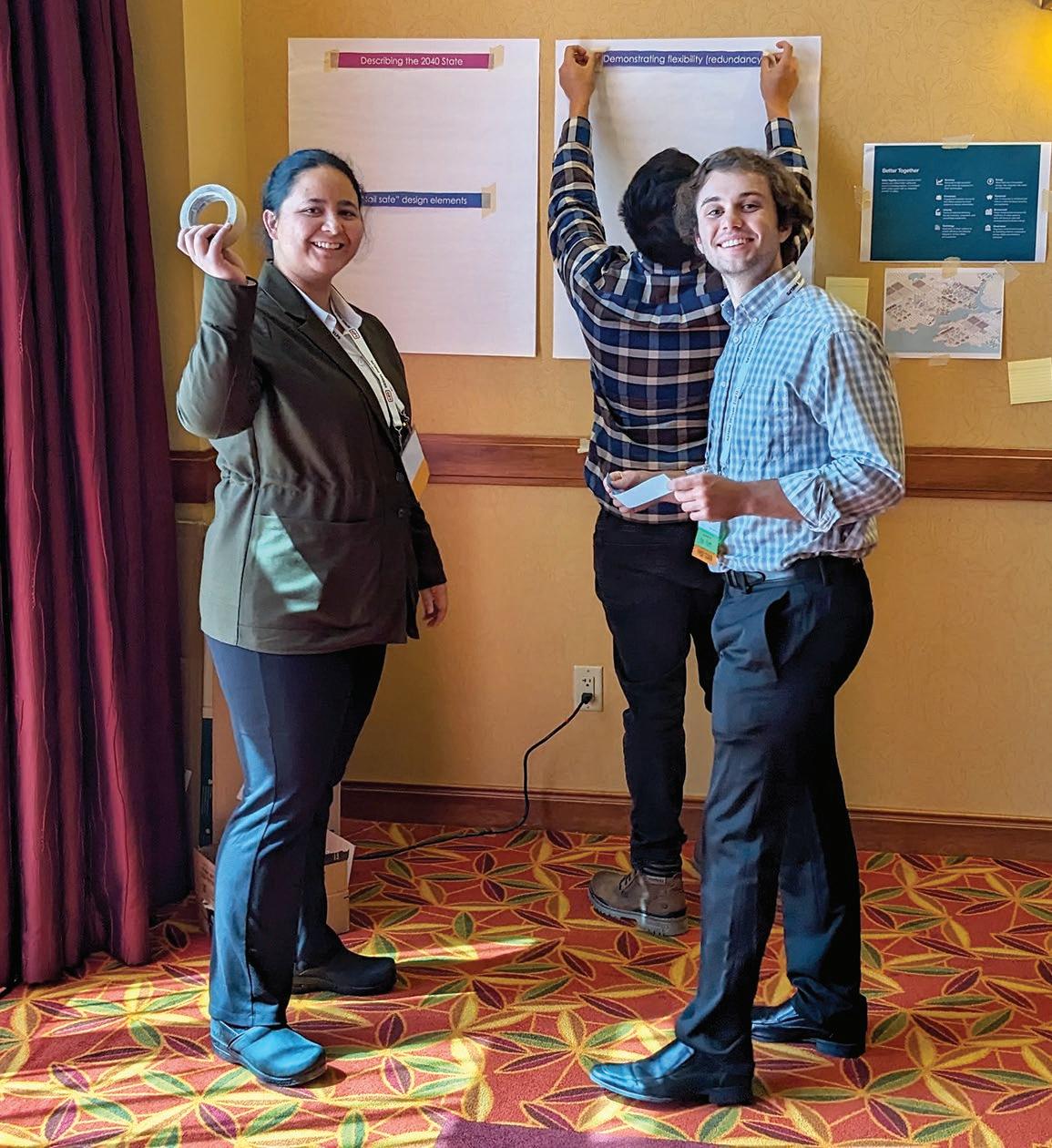
use partnerships, and the development of green infrastructure. In an “Autonomous Communities” scenario, households, communities, and industries developed local independent systems for water collection, processing, and distribution while considering the interrelations between water, energy, and food systems. Autonomous communities emphasized decentralized systems supported by advanced technology, local supply solutions driven by high resource pricing, and extreme weather measures addressed on a community scale.
Groups addressed four different aspects in their 2040 vision, beginning with the “current (e.g. 2040) state” of the Rocky Mountain Section’s water utilities’ resilience. Next, participants elaborated on what fail-safe (or “safe-to-fail”) design elements would look like for these systems. Building off these design elements, participants were asked how utility systems might demonstrate flexibility to accommodate inevitable variability. Finally, groups were asked to identify gaps between the current state of resilience in Rocky Mountain water utilities and the future their group envisioned for 2040.
Group discussion and responses fell under eight general themes: (1) A.I. and Smart Technology, (2) Education, (3) Infrastructure, (4) Interconnections and Collaboration, (5) Monetary, (6) Planning, (7) Public and Community Knowledge and Perceptions, and (8) Regulations and Policy.
1. AI and Smart Technology discussions called for integrating AI support and smart systems into systems and an interest in understanding these technologies better.
2. Education topics centered around personnel training and included the idea of “cross-training” to provide more opportunities for education with members of the public.
3. Infrastructure responses were varied and addressed solutions and ideas from the home to system scale. Examples included building redundancy throughout water distribution systems to supporting practices like rain barrels for the individual home.
4. Interconnections and collaboration were an overarching theme throughout the workshop. Discussion points included utilizing resources like the Colorado Water Resources Network more and extending utility outreach to the communities being served.
5. While important, monetary mentions were brief. Monetary discussions focused on (1) the need for funding to support responses to current and future issues and (2) increasing widespread recognition of the value of water.
6. Responses around planning included influences from the guest presentations (“Be Like Tucson”) as well as discussion on how to address current and growing issues in the water sector. Identified issues included addressing growing equity gaps, prioritizing among circular needs, and rethinking approaches to addressing needs and priorities for water systems.
7. Tying back into a focus on communities being served, there was also discussion on improving perceptions by the public and increasing awareness of the value of water. Suggestions included recognizing knowledge by the community and increasing public awareness, particularly around the “true value” of water.
8. Regulations and policy discussion centered around a “Guidelines – not rules approach” with a call for both incentives to encourage change and flexibility for change in future regulations.
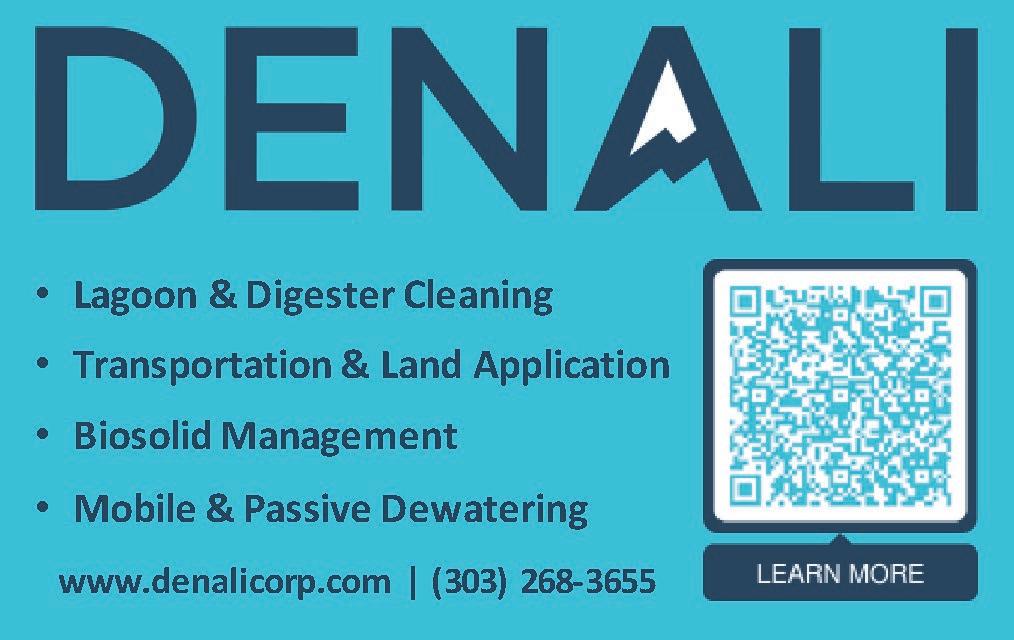
In this workshop, water providers envisioned steps to bridge the gap between the current state of their systems and a more resilient water future.
Water resiliency was defined by participants as a state that utilizes advanced technology, strengthens interpersonal connections through education and collaboration, and works within frameworks that allow for adaptability to dynamic issues.
Findings from this workshop and future sessions will continue to highlight future directions for a more resilient water sector, lending insight into steps that can be taken to address issues faced by water providers today. An article including themes analysis from the water resilience workshop series and related work by the Blue-Green Decisions Lab at Colorado State University will be forthcoming in the following year.

Dixie L. Poteet is a graduate student in the Systems Engineering doctoral program at Colorado State University, bringing a focus on water allocation decisions and an interest in the human impacts of water systems to the Blue-Green Decisions Lab.
Dr. Steven Conrad is an associate professor of Systems Engineering at Colorado State University. He has conducted research and consulted with the water and energy industry for over 25 years on the feedback between human-environmental systems through the coupling of social and engineering sciences to inform decision-making and visualization, the quantification and modeling of system function, system optimization and resilience, and policy and planning as applied to energy, water and food systems, sustainable community design, and climate change adaptation.
Mike Altland is Mott MacDonald’s Colorado water portfolio manager, and has over 35 years of experience in the water consulting field, focusing on regional solutions to water and wastewater management.
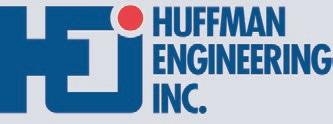



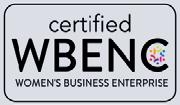


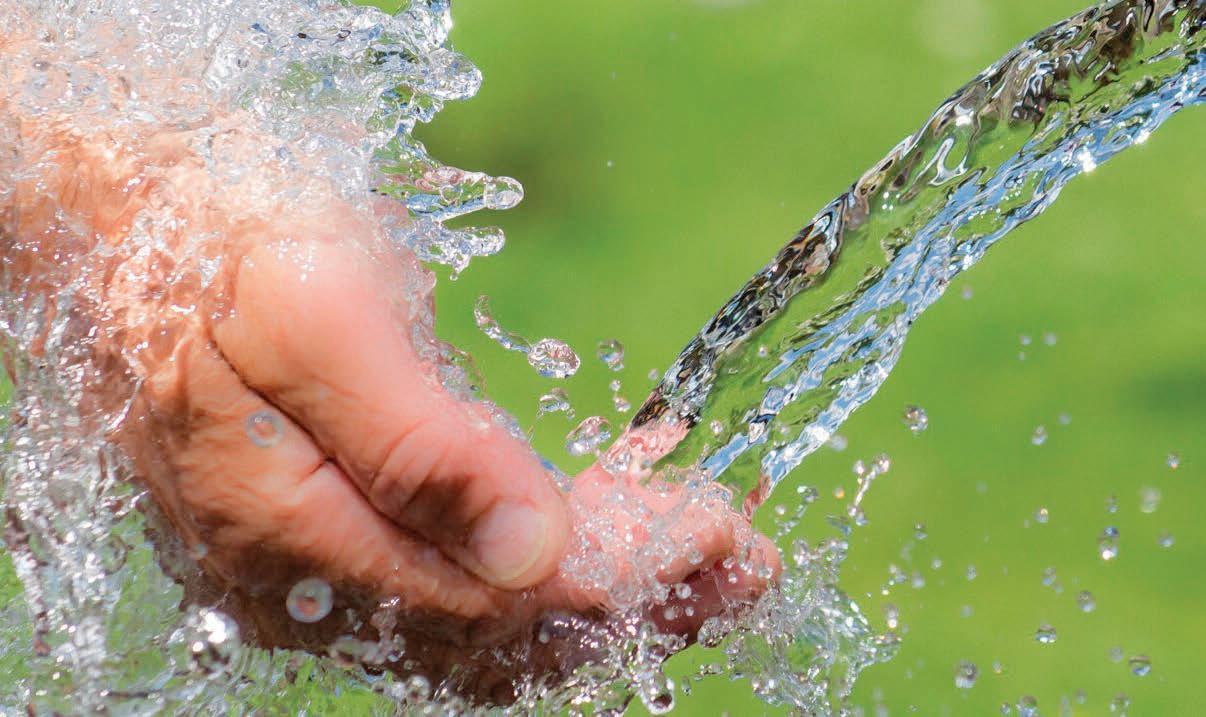







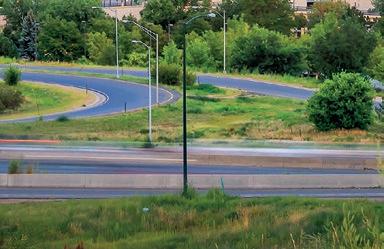












Capture more debris with no fouling or jamming. Lakeside’s Raptor® FalconRake® Bar Screen features a trouble-free stainless steel chain link design and multiple rake heads to achieve continuous, highly efficient solids removal with low headloss. The energy saving drive system operates at variable speeds to ensure superior cleaning, and is easily accessible above the water surface. And, as with everything Lakeside manufactures, our heavy-duty design and all stainless steel construction is made to last even in the most severe conditions. Protect your downstream equipment with the Raptor FalconRake Bar Screen, Lakeside’s proven, durable and cost-effective screen technology for rapid debris removal in municipal and industrial applications.


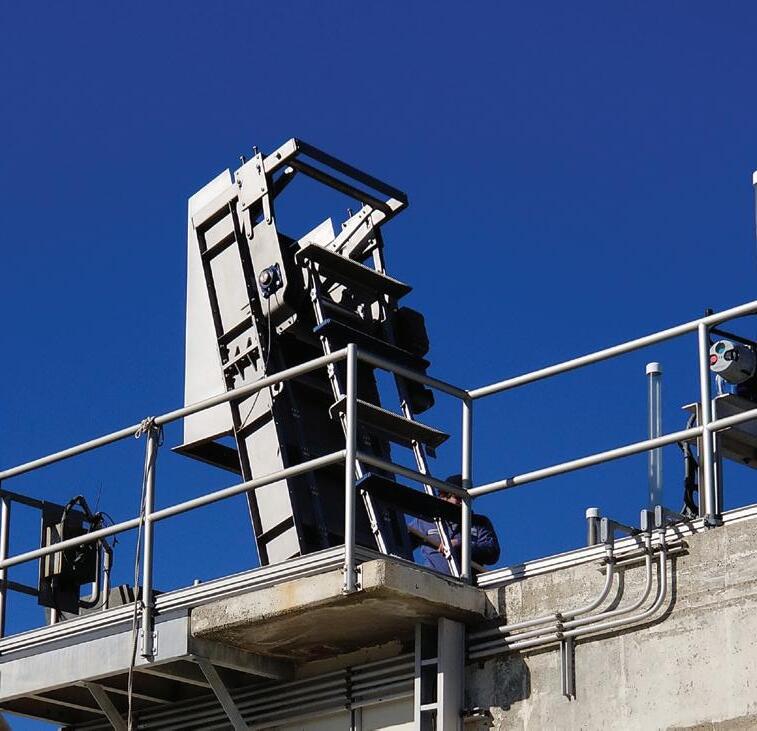

Speak to one of our experts at 630.837.5640, email us at sales@lakeside-equipment.com or visit lakeside-equipment.com for more product information.
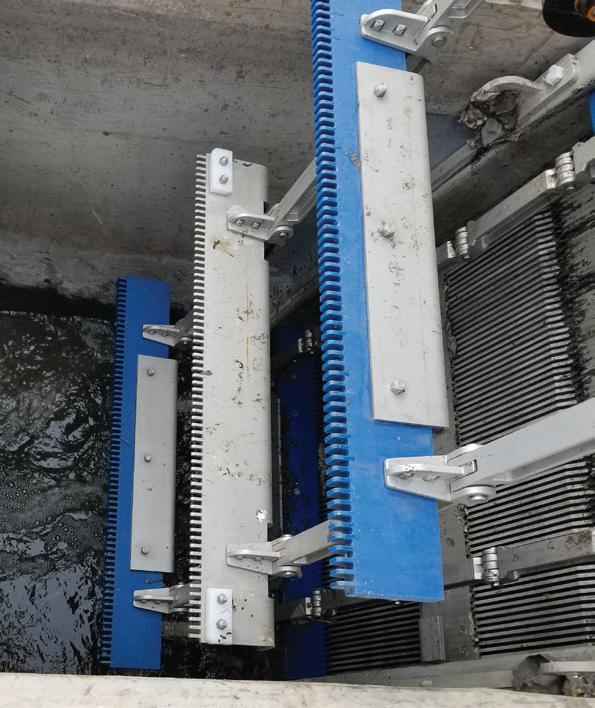
By Josh Roach, Deputy Director of Operations and Maintenance, Englewood Utilities
Working in operations and maintenance at water utilities for the past 20 years has afforded me an incredible opportunity to provide essential services to communities, collaborate with diverse people, and pursue a rewarding career. It has been both engaging and fulfilling, and I look back with immense gratitude for all the good that has come to me from this industry.
As rewarding as it has been, I can’t say it has been easy. Much of that work has been challenging. The constant variables and unknowns have forced me to overcome many obstacles, build my character, and become a better leader. Because of this, I appreciate the demanding nature of this industry and the fact that many of my experiences have been hard.
From my time as a laborer working overtime nights and weekends repairing water main breaks to being a supervisor learning to transition from an individual contributor to a leader, to becoming a manager responsible for the health and welfare of a community, and now serving as a deputy director responsible for multiple diverse sections within a utility, each step has been progressively harder. For that, I am thankful. Hard tasks and responsibilities, when approached correctly, make better people. Hard challenges establish and prove character. These are the experiences I look back on as the most rewarding and worthwhile. So, I now choose to embrace them.
The most rewarding aspect of my career has not come from accolades or recognition but from overcoming a frustrating mindset and the inherent difficulties of the job. Being on call 24/7 for 20 years, responding to main breaks that slowly drain storage towers, managing sanitary sewer overflows, dealing with
As rewarding as it has been, I can’t say it has been easy. Much of that work has been challenging. The constant variables and unknowns have forced me to overcome many obstacles, build my character, and become a better leader. Because of this, I appreciate the demanding nature of this industry and the fact that many of my experiences have been hard.

staff turnover, handling personnel matters, interacting with difficult people, and navigating an ever-changing regulatory, technological, and societal landscape have all been common experiences for me. These very challenges are the circumstances that have proved the most rewarding to me and I’m most proud to have helped solve them.
I certainly did not always feel this way. In the past, these emergency or unexpected aspects of the job were the ones I used to dread. I loathed the surprise phone calls at night, the SCADA alarms on holidays, and the emergencies that required my immediate attention. However, I don’t dread them anymore. I am now grateful for these challenges because they have provided me with invaluable experiences, as well as created fortitude, and resilience within me, enabling me to help lead others through similarly difficult circumstances.
While I may not always be happy or excited about addressing tomorrow’s emergencies or that late-night phone call, I understand that each past challenge has made me a better employee, leader, and person. Avoiding difficulties would only worsen problems, and I would have to live knowing I am the type to flee from challenges rather than confront them, which is not who I want to be.
Embracing difficulties is not easy, and I don’t always do it well. However, I now perceive those difficulties differently. After more than 15 years of dreading what might come next, I’ve reevaluated and adapted to living in such a demanding environment. I determined that instead of chasing attention and praise, I would prove my value by chasing problems, solving issues, and engaging in tasks that others may avoid. Knowing that the best leaders, engineers, and technicians run toward problems, not away from them. I wouldn’t
wait for the problems to arise; I’d go find them before they found me.
As I continue to make this transition in thinking, I’ve learned a few things along the way. I don’t run at problems haphazardly with naïve optimism but approach them strategically and confidently. Here are a few thoughts I’ve used to help face challenges with a sound and controlled mind, fully expecting to turn hard things into victories and using each challenge as an opportunity for improvement.
1. Problems, emergencies, and difficult circumstances should be expected, but they are never permanent. If you are surprised or caught off guard when problems occur, the real problem lies in the lack of preparation and anticipation of the inevitable. Expect them, plan how you will mentally respond to them, and understand that each one is nothing more than an opportunity to demonstrate and prove your and your team’s worth.
2. Don’t blame how you feel on others when your job has difficult moments or circumstances.
Blaming bosses, staff, and circumstances is the easy way out, but in reality, it is never anyone’s or any circumstance’s fault for how we choose to feel. Difficult circumstances in the workplace are neither good nor bad; they are just obstacles, and we deal with them accordingly. Recognizing that the biggest hurdle we have is often the approach and attitude we take as we address them.
3. People are never frustrating. If we feel like the biggest difficulty we have at work is with peers, bosses, staff members, or people in general, then it is we who have the most opportunity for improvement. Frustration is a feeling or an emotion we choose to have, not an adjective to describe people. My role as a leader is not to be the best I can be but to
help others achieve their best. This is made difficult when we label people as anything other than the person they are.
In conclusion, while there are various ways to approach the challenging aspects of your job, I believe a constructive approach should encourage us not to run from, dread, or avoid difficulties. Instead, we should embrace them, recognizing they shape, mold, and ultimately transform us into our most effective selves.

Josh Roach is the Deputy Director of Operations and Maintenance for Englewood Utilities, overseeing Plant Operations, Distribution and Collections, Environmental Compliance, and Electrical and Instrumentation. He can be contacted at jroach@englewoodco.gov



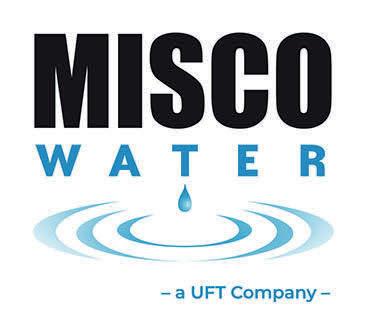


















Understanding data is critical to developing infrastructure improvements. Utility owners and operators need insightful data to make informed decisions and to effectively communicate the business case for spending tax dollars on major and necessary projects. However, the more data you collect and store, the more you need to manage and visualize large amounts of information effectively. Adopting the right tools and using them moving forward makes master planning more effective by simplifying tasks and providing better insights into short and long-term needs.
What information is critical for a wastewater master planning study? How can utilities and consulting engineers collectively navigate large data sets to make informed decisions? Three common components of wastewater master planning studies that
generate or aggregate large amounts of data are:
• Wastewater Flow Monitoring and Evaluation of Inflow and Infiltration (I/I)
• Field Asset Survey and Inventory Development
• Population and Wastewater Flow Projections
For each of these data-driven tasks, innovative planning tools that use out-of-the-box applications can increase efficiency and clearly communicate information to stakeholders.
Categorizing the quantity and variation of wastewater flows conveyed through pipelines and lift stations is crucial to evaluating the capacity of the collection system and treatment infrastructure.


Master plans that include wastewater flow monitoring can quantify dry weather flows and daily patterns as well as the amount of inflow and infiltration (I/I) that occurs when rainwater or groundwater enters the collection system through defects in pipes and manholes. Visualization of flow monitoring data streamlines the hydraulic modeling and system analysis tasks. Demonstrating areas of the collection system with high levels of I/I is a powerful component of the business case for sanitary sewer evaluation survey efforts.
Dashboards can effectively visualize and analyze large data sets. For example, a Microsoft Power BI dashboard allows for filtering and slicing data sets, recalculating values, and displaying information graphically and numerically.

Figure 1 shows a Microsoft Power BI dashboard for visualizing flow monitoring and rain gauge data. This dashboard includes flow, depth, and velocity information from the flow monitors, plus corresponding rainfall information and a scattergraph, all of which can be updated instantly with the data slicers.
2 shows how a GIS-based map can visualize flow monitoring results. The flow monitor basins are color-coded based on calculated, normalized I/I results, with red basins having the highest recorded I/I. With a clear visual, decision-makers can quickly and easily
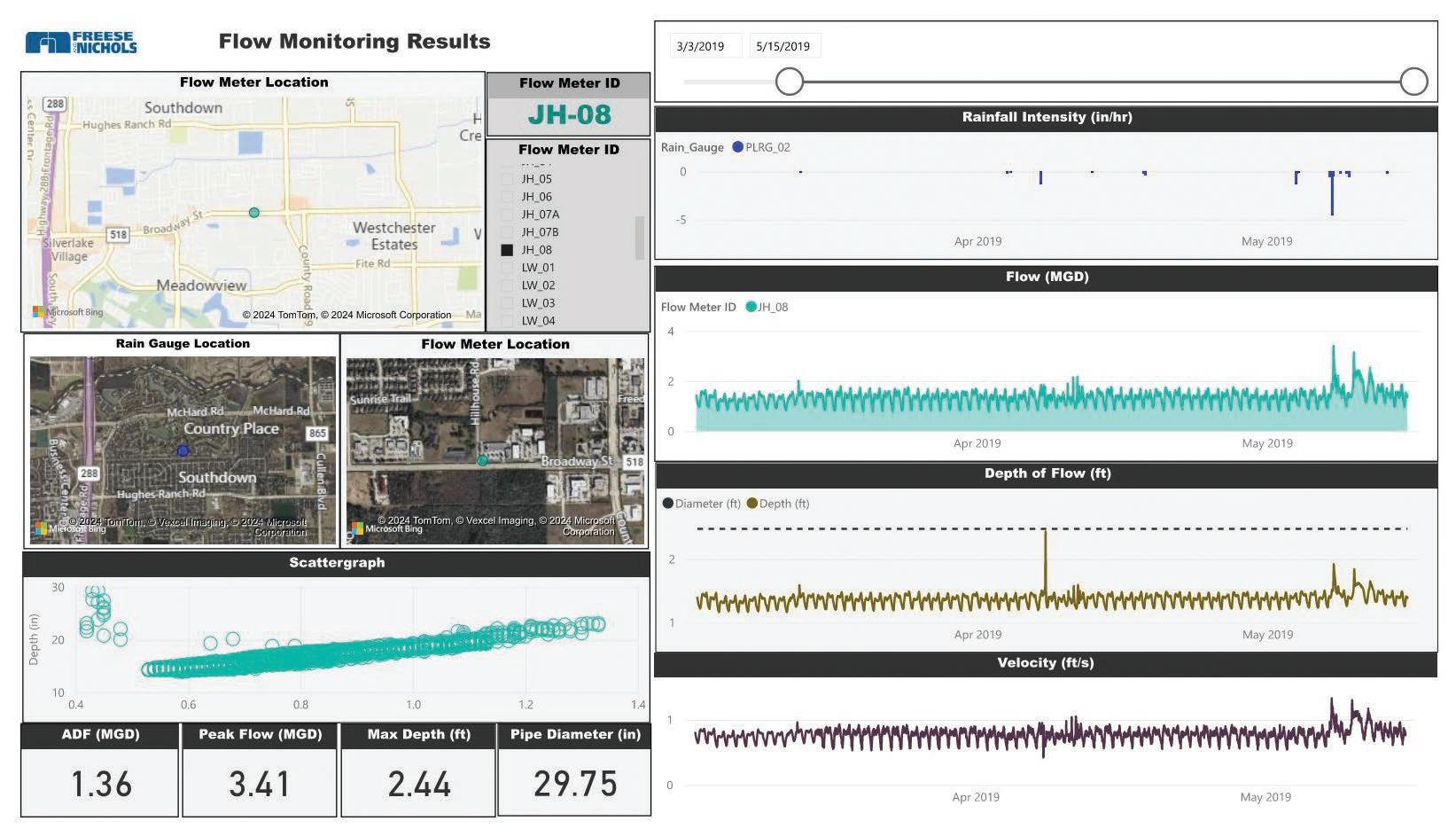
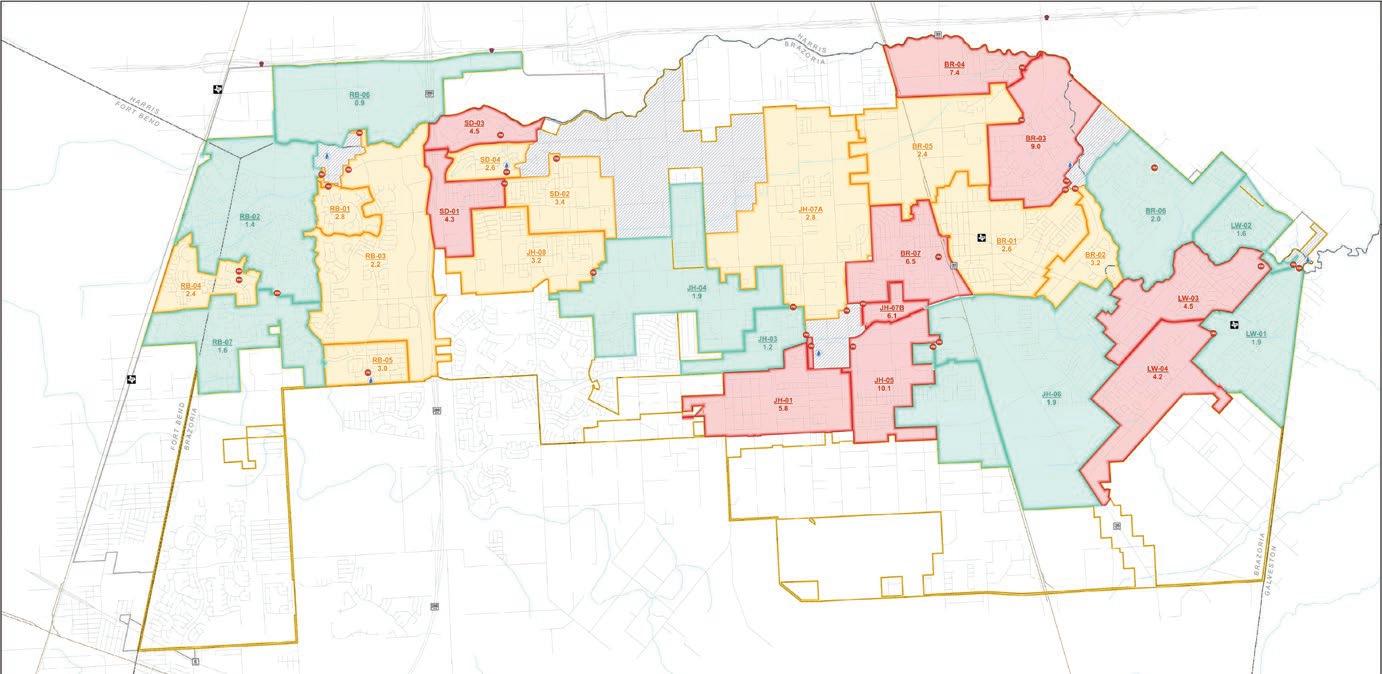
understand where to allocate resources for I/I reduction activities.
Wastewater master plans incorporate field asset surveys and develop facility inventories to inform decisions about investing in rehabilitation or replacement of assets. Field asset surveys collect information such as the number of pumps in a lift station, wet good dimensions, manhole rim, and invert elevations, location (X, Y coordinates), and the observed condition of collection system infrastructure.
Facility inventories typically include a unique ID or facility tag and information such as age, capacity, dimensions, model and/or serial numbers, and other facility and assetspecific data. Field asset surveys and facility inventories are integral to asset management efforts and every element of a master plan, including hydraulic modeling, condition assessments, system capacity analyses, and Capital Improvement Plan (CIP) development.
Facility condition assessments are a powerful use case for ESRI™ ArcGIS Field Maps because the application can be configured to include predetermined scoring parameters (e.g., 1-5) and can accept freeform comments from staff in the field. This tool can also increase efficiency for multidiscipline teams conducting on-site condition assessments because the application can be run simultaneously on each team member’s phone or tablet.
Figure 3 shows an ArcGIS Field Maps application that can streamline field data collection efforts.

Figure 4 shows a Microsoft Excel-based lift station inventory incorporating facility asset information aggregated from multiple sources during the master planning process. A tabular inventory makes it easy to share the data at the end of the study and update asset information over time. This example illustrates how color-coding can flag different data sources (e.g., as-built plans, field surveys, institutional knowledge, calculated data, etc.) for record-keeping and data confidence.
What and Why: Population and wastewater flow projections form the basis of a master plan’s system analyses and capacity-based capital improvement recommendations. Master planning efforts typically draw



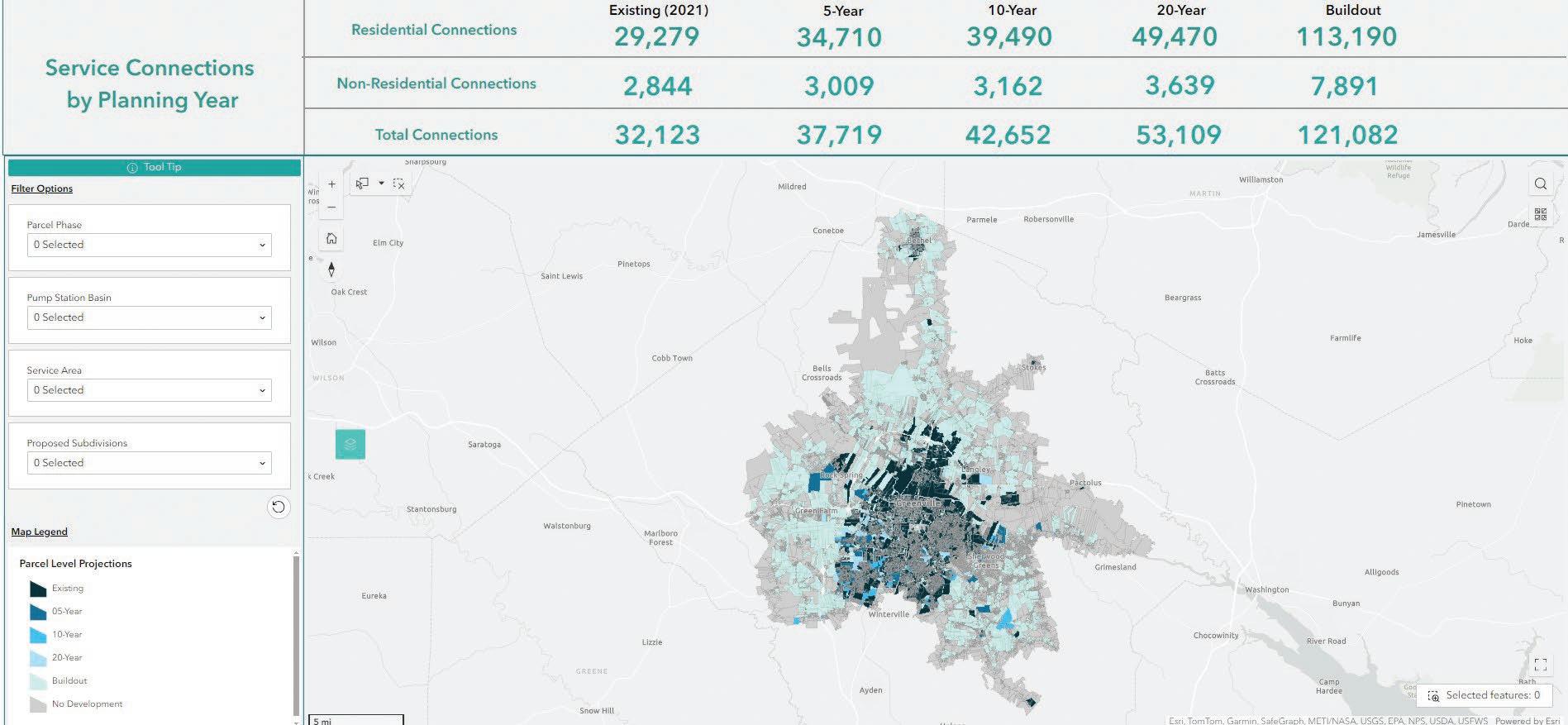
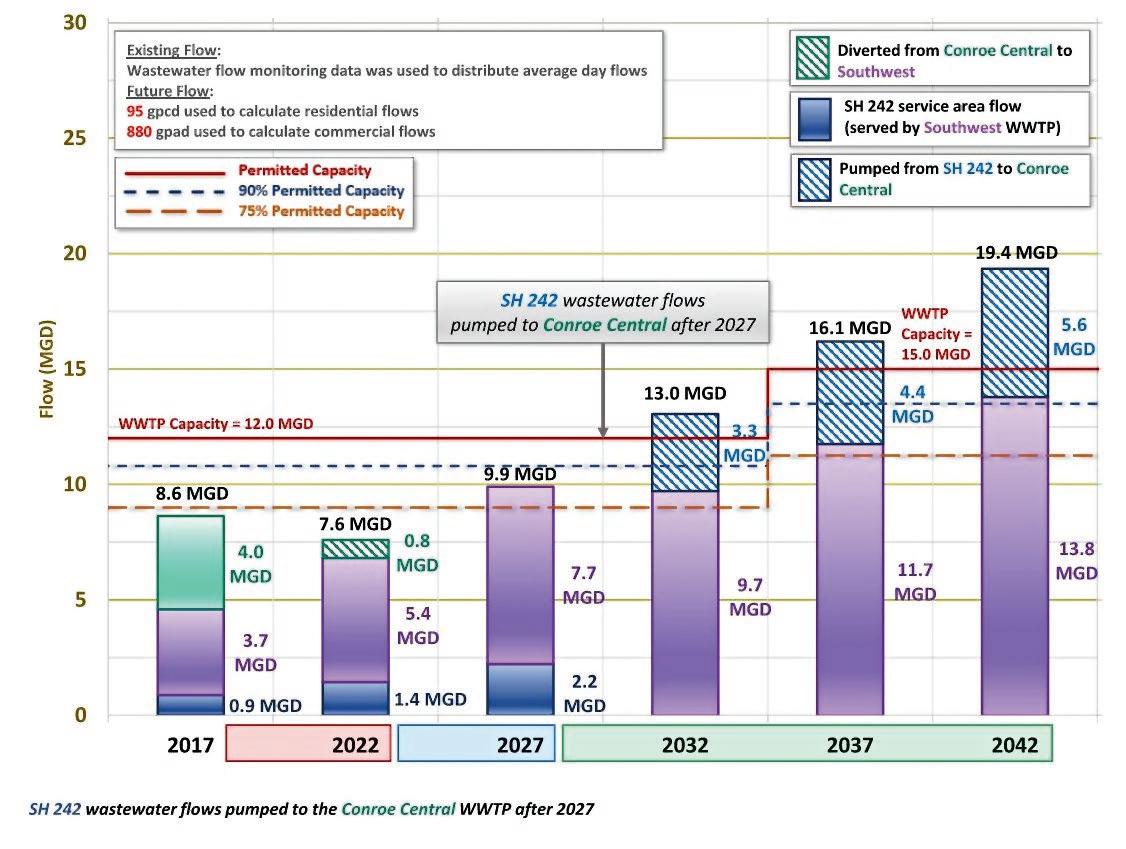
on multiple data sets, such as historical population and development trends, flow monitoring data, comprehensive plans, future land use maps, and developmentspecific information.CIPs rely on the ability to spatially allocate population and wastewater flow projections and identify timelines or planning periods for the anticipated growth.
Figure 5 shows an interactive dashboard developed in ESRI™ ArcGIS Experience Builder that allows the user to display and filter population and wastewater flow projection information. Because the data is tied to GIS at the parcel level, the interactive dashboard provides flexibility

for detailed location-specific analyses as well as basin-level aggregation. Data can be further summarized by planning period and customer class (i.e., residential, non-residential, commercial, mixed-use, etc.) to help utilities understand the location, type, and quantity of anticipated development and corresponding wastewater flows.
Figure 6 shows a graph produced in Microsoft Excel that overlays wastewater flow projections with treatment or

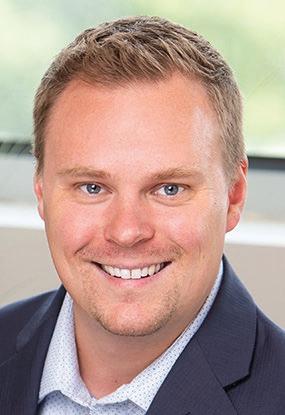
reclamation facility capacity. This type of visualization communicates the timing and capacity of future expansion needs, facilitating the budgeting and planning processes to provide wastewater treatment capacity for future utility customers.
Every utility and wastewater master plan is unique. The common thread across all planning efforts is the need
Jessica Brown, PE, IAM, is a Principal/Vice President and the national water/wastewater master planning practice leader at Freese and Nichols, Inc. (Licensed in Colorado, Florida, Georgia, Kansas, North Carolina, Oklahoma, and Texas), jessica.brown@freese.com.
Kendall Ryan, PE, PACP, is an Associate and group manager for water/wastewater master planning at Freese and Nichols, Inc. (Licensed in Florida and Texas), kendall.ryan@freese.com.


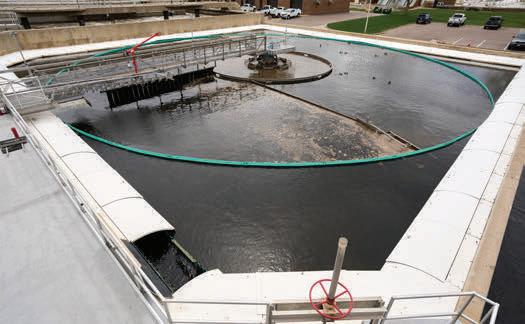
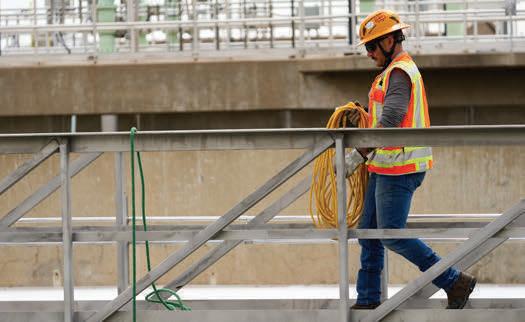
to utilize data to develop infrastructure improvements that benefit and serve our communities. These innovative planning tools can support this goal by increasing efficiency and clearly communicating information to stakeholders. As with all tools, an up-front effort is required to configure them. However, once they are configured, you can easily update and maintain these planning tools to make future planning efforts more efficient and provide even more insights into your data.
Ishita Rahman, PE, PACP, is an Associate and water/wastewater master planning project manager at Freese and Nichols, Inc. (Licensed in Texas), ishita.rahman@freese.com.
Isabella Stubbs, EI, is a Project Manager in the water/wastewater master planning group at Freese and Nichols, Inc. (Certified in North Carolina), isabella.stubbs@freese.com.








By Jamie Behrens, PE, and Catherine McIntosh, PE, PMP






Denver Water’s Northwater Treatment Plant (NTP) updates a critical portion of Denver Water’s regional water system, serving more than 1.5 million people throughout the Denver Metro area. The plant can treat up to 75 million gallons per day (MGD) and can double in capacity should population growth demand it. This $520 million investment was among the largest projects undertaken to date in Denver Water’s 100-year history and was constructed by Construction-Manager-At-Risk (CMAR) delivery. Construction of NTP began in August 2018 and commissioning and startup were completed in May 2024.
Plant commissioning and startup are often a final step in any water treatment plant project. Making it successful, however,





requires early planning, clear intention, and innovation. This was true for the project team leading the design, construction, and commissioning of Denver Water’s NTP. By planning years in advance, tailoring Denver Water’s commissioning processes to project-specific needs, and ensuring the right people at the right time, the NTP team was able to successfully commission and start the plant by May 2024.
Keeping Denver Water’s priorities around safety, quality, budget, personnel, and schedule at the forefront, the NTP team developed a Facilities Commissioning and Start-up (FCS) procedure concurrent with the design phase of the project. This was different from the traditional approach of waiting to develop a commissioning plan until after design and construction. Not only did early planning demonstrate clear thinking, but it
also allowed for a more seamless transition between phases resulting in significant schedule and associated cost savings. FCS was intentionally designed to be robust yet efficient. It included three main phases, thoughtfully sequenced to test, document, and address equipment and system-level concerns before they became significant issues during full plant operation. See Figure 1 for a description of each phase. This unique multi-phase testing process –planned years in advance of commissioning –ensured that the water treatment plant was fully operational and capable of delivering safe and reliable water at startup.
The NTP Project Management Team (PMT) worked closely with the design and construction teams to first align Denver Water’s established commissioning processes with project needs and phasing specific












TESTING PHASE
Operational Readiness Test
System Acceptance Test
Facility Reliability Test
SCOPE OF TEST
Series of tests and inspections performed to verify, demonstrate, and document that mechanical, electrical, and process equipment and vendor control systems meet functional, performance, and other specified requirements
Series of tests and inspections performed to verify, demonstrate, and document that mechanical, electrical, and process equipment and vendor control systems meet functional, performance, and other specified requirements
Test performed to demonstrate continuous operation of the entire facility. Functionality Reliability Testing at NTP included four phases: Treatment Optimization Pretreatment, Treatment Optimization Filters, Treatment Optimization Disinfection, and 14-Day Continuous Operation
PURPOSE OF TEST
Ensure that equipment components and vendor control systems meet operational requirements
Ensure seamless coordination and functionality through programming
Assess the plant as a whole testing its reliability, efficiency, and resilience under real-world conditions
to NTP and alternative delivery. Once the processes were aligned, the team developed Operational Readiness Test (ORT) plans to capture all specific pre-requisite checks and functional and performance requirements. Likewise, the team developed System Acceptance Test (SAT) plans to test all programming iterations of typical operation and failure scenarios.
Finally, the team translated the ORT and SAT plans into user-friendly, comprehensive checklists on a shared digital platform. This unique approach to distilling and translating equipment and system operational requirements into user-friendly digital checklists ensured clarity and ease of use for those conducting the testing.
For the commissioning and startup teams, the key was having the right people on-site at the right times to perform the testing, identify issues, and develop innovative solutions to minimize downtime, changes, and cost.
During ORT and SAT, technical leaders were available to answer questions and troubleshoot at each step. Electronic checklists for each activity allowed for flexibility in who performed the tasks and ensured consistency in the testing. This approach enabled greater resource adaptability and improved efficiency. Likewise, key Denver Water staff were involved early and consistently in the commissioning process to share system-wide knowledge

and lessons learned, creating a more seamless transition from commissioning to startup. Specifically, Denver Water’s Startup, Commissioning, and Operations team began to take over plant operations during Facility Reliability Testing (FRT).
PMT decision-making and a clear issue escalation matrix also enabled the NTP team to be responsive and nimble. As issues came up, teams worked to solve them at the lowest level. When issues couldn’t be resolved, they were quickly escalated and addressed at the next appropriate level. One scenario involved the CMAR proposing a more efficient approach for treatment process media installation and validation. The vendor and design team provided their technical input, discussed the pros and cons, and escalated the recommendation to the PMT, who accepted the proposal. This resulted in savings of time and startup water supply, without compromising quality.
As of May 2024, NTP reached completion on time and under budget. The successful commissioning and startup of Denver Water’s state-of-the-art NTP was a result of early planning, a robust and streamlined FCS procedure, innovative use of technology, and a skilled and flexible workforce. Without these pieces, the FCS schedule and implementation would have been at risk of derailment due to equipment or system operational issues. As noteworthy, the process created important assets in the
form of lessons learned around successful commissioning that Denver Water will apply to all future projects to aid in efficiency, cost-savings, and quality assurance.

Jamie Behrens, PE is a Civil Engineer and Project Manager with 16 years of experience in drinking water and wastewater treatment for municipal and federal projects. She has been on the process mechanical design team for Denver Water’s Northwater Treatment Plant program since 2017 as a Design and then Project Manager and as a Process Mechanical Resident Engineer. She can be contacted at jamie.behrens@jacobs.com or 352-231-1465.
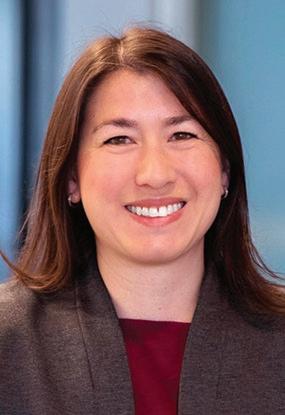
Catherine McIntosh, PE, PMP is a Civil Engineer and Project Manager with 20 years of experience in drinking water and stormwater for municipal, federal, and industrial projects. She has been on the Owner’s Representative team for Denver Water’s Northwater Treatment Plant program since 2016 as both a Design Manager and Resident Engineer. She can be contacted at mcintoshcw@cdmsmith.com or 303-519-2625.




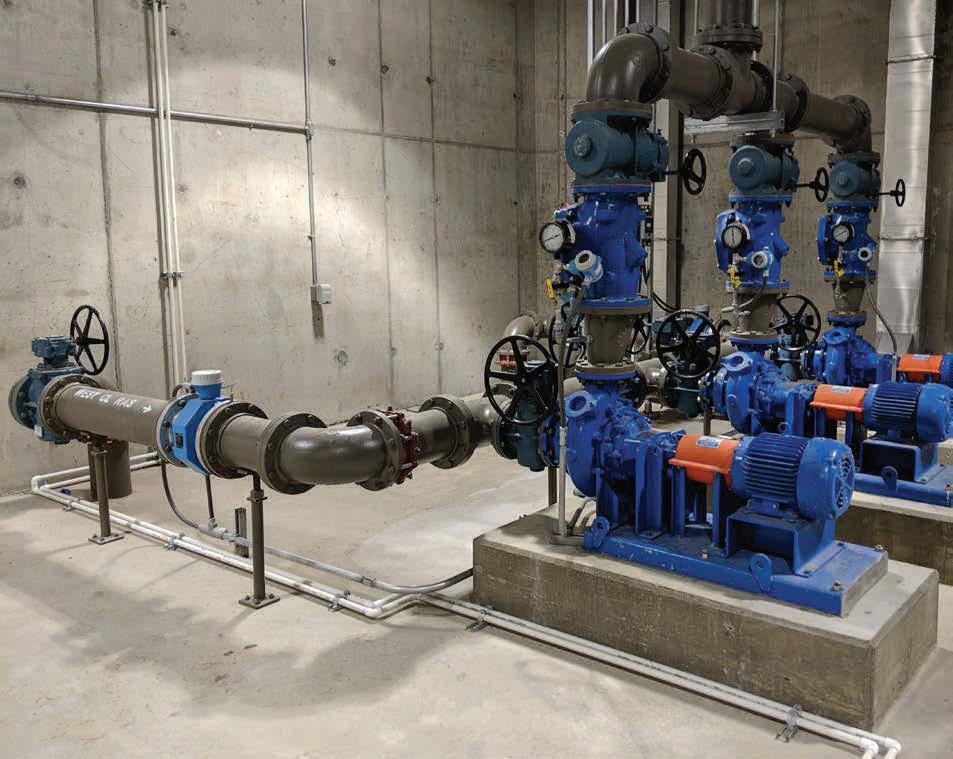



Designed for Flexibility

Measure up to 20 parameters per controller and easily expand your network with a modular, plug-and-play system.
Designed for Process Optimization
Improve process control and increase operational efficiency with accurate, continuous water quality monitoring.
Designed for Cost Savings






Reduce operating costs and save on chemical, energy, and water usage with better visibility into your process. The proof is in the data.



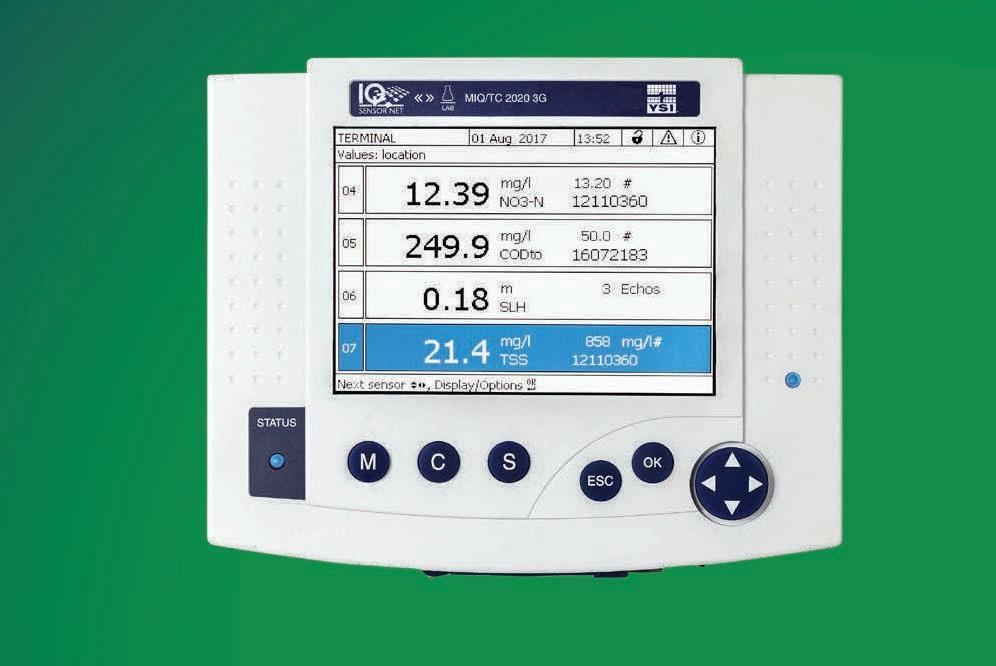

















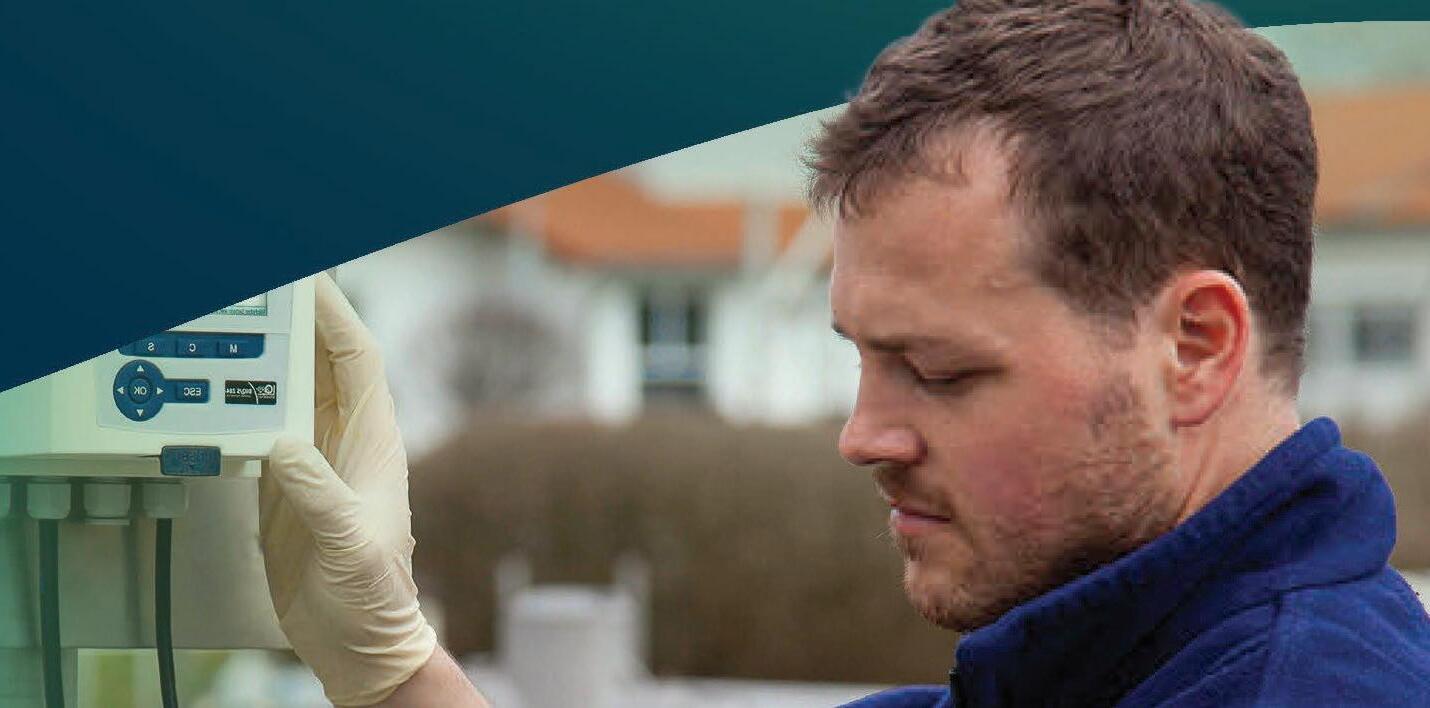












Most see a dam.

We see a refreshing drink of clean water.






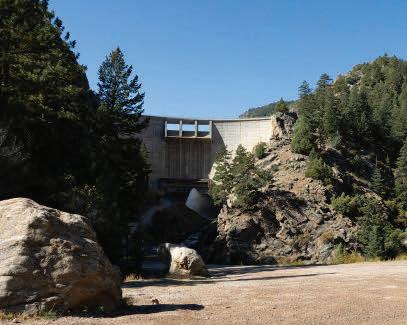
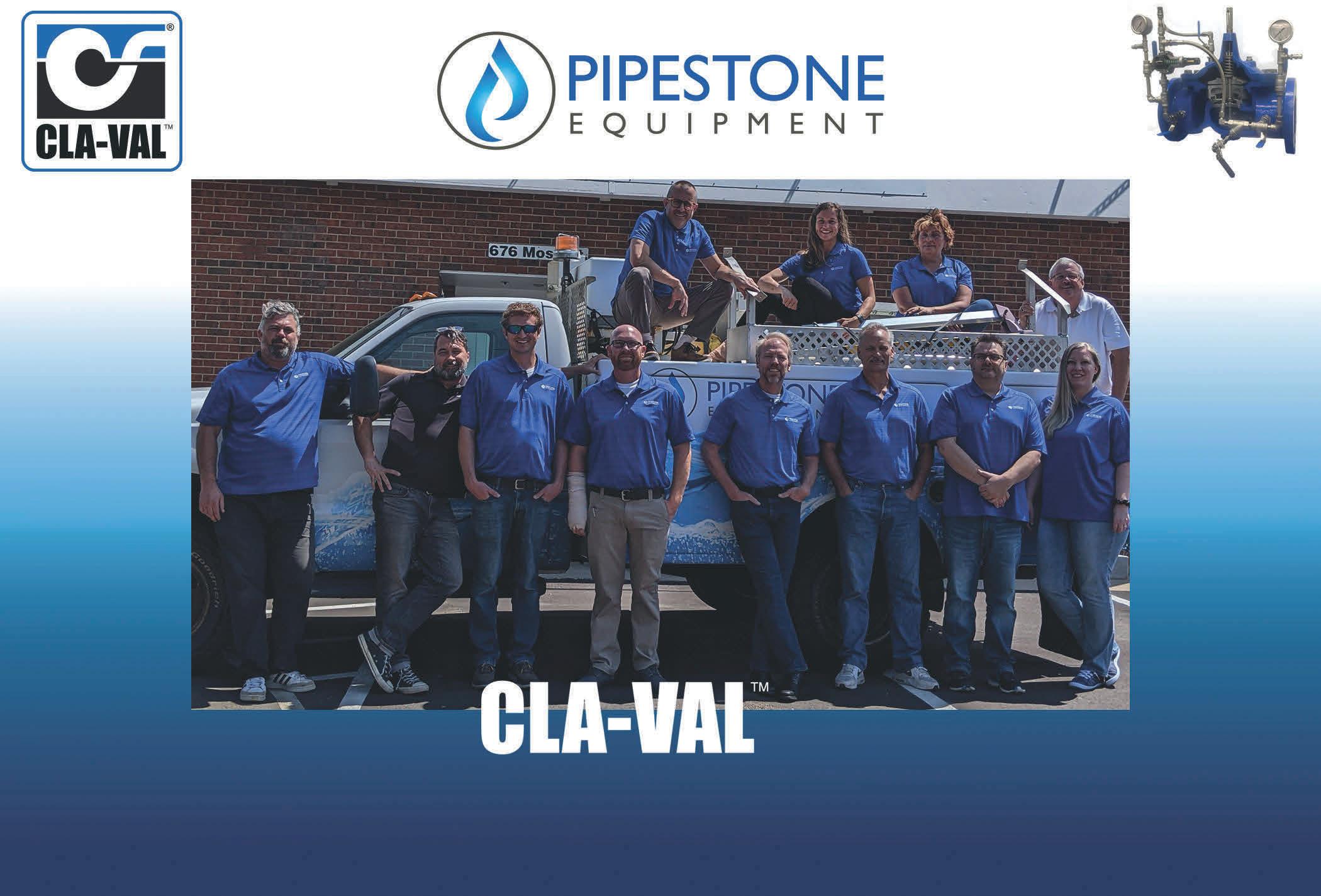


By Michelle Young, Ph.D. and Victor Sam, PE
The modern workplace is a mosaic of diverse talents and backgrounds, where fostering inclusivity and equity is a priority. However, even with the best intentions, bias can stealthily seep into our decisions and interactions, hindering progress toward a more inclusive environment. This article aims to shed light on recognizing and addressing implicit bias in the workplace, fostering awareness, and implementing actionable strategies.
Implicit bias refers to the subconscious attitudes and stereotypes that influence our judgments and behaviors, often without our conscious awareness. Rooted in societal conditioning and personal experiences, these biases can shape our perceptions, decisions, and interactions.
The classic example of implicit bias is when a stereotype pops into your head. This happens to everyone – stereotypes are based on your brain recognizing patterns and making generalizations. At the same time, these thoughts can cause you to bias your responses. Bias-confirming thoughts that immediately pass into your consciousness are what psychologists call implicit bias.
While implicit bias happens, it is important to recognize the harm it can cause. Researchers have documented the links between implicit bias and discrimination. Recognizing implicit bias is essential for several reasons:
• Fairness and Equity: Unrecognized bias can lead to unequal treatment, affecting hiring decisions, promotions, and opportunities for advancement.
• Workplace Culture: Implicit bias erodes an inclusive workplace culture, leading to tensions, misunderstandings, and lower employee morale.
• Innovation: Diverse perspectives drive innovation. Implicit bias can stifle these perspectives, hampering creativity, and growth.
• Productivity: An inclusive environment fosters collaboration and enhances productivity, while bias can hinder effective teamwork.
STRATEGIES AND APPROACHES TO ADDRESSING YOUR IMPLICIT BIASES
Addressing implicit biases requires a combination of self-awareness, education, and intentional effort to challenge and change your thought patterns. Here are some strategies and approaches to help you address your implicit biases:
1. Self-Reflection: Begin with introspection. Regularly assess your own beliefs, attitudes, and reactions. Consider situations where you might have made assumptions based on someone’s characteristics. Be cognizant of when you are identifying stereotypes in your thinking and evaluate the validity of those assumptions.
2. Patterns and Trends: Analyze workplace patterns. Are certain groups consistently underrepresented in leadership roles or assignments? Are there common themes in who receives recognition?
3. Feedback and Open Dialogue: Encourage open conversations with colleagues. Create a safe space where feedback on behavior and decisions is welcomed. Others’ perspectives can offer invaluable insights.
4. Microaggressions: Pay attention to microaggressions – subtle, often unintentional acts that marginalize individuals based on their identity. Address these instances promptly and constructively.
5. Language and Communication: Monitor your language for hidden biases. Are you using language that reinforces stereotypes or makes assumptions about individuals?
6. Stereotype Challenge: Actively challenge stereotypes when they emerge in your thoughts or conversations. Replace them with accurate, fair assessments of individuals.
Recognizing implicit bias is an ongoing journey that requires vigilance and commitment. It involves introspection, open dialogue, and a willingness to challenge ingrained assumptions. By actively addressing implicit bias, we contribute to a more inclusive, equitable, and productive workplace that harnesses the power of diverse perspectives. Several websites exist that can help you identify your implicit biases. Some websites have tests you can take to identify your biases, articles to educate yourself on the topic, and training videos.
We’re always looking for new committee members and fresh perspectives. If this article resonates with you, consider joining the DEI Committee. Our committee meets online every third Tuesday of the month at noon. For more information on how you can play a role in the committee, please contact Victor Sam at victor.sam@stantec.com, Michelle Young at myoung@carollo.com, or Alex Sofranko asofranko@pwsd.org.
By Anna Schroeder, Engineering Supervisor, South Platte Renew
South Platte Renew (SPR), the third largest water renewal facility in Colorado, is proactively addressing the ever-increasing challenge of wastewater treatment with a novel approach to innovation: the Pilot and Research Center (PARC). PARC’s central mission is to solve the water industry’s largest challenges through partnering, piloting, and utility-driven innovation.
PARC represents SPR’s philosophy and culture of innovation and also encompasses the physical infrastructure built to test and pilot technologies in SPR’s real-world environment.
“Great ideas can come from anywhere in an organization. PARC fundamentally connects everyone to innovation at SPR,” said SPR Director, Pieter Van Ry. Through PARC, SPR can better achieve current and future regulations; attract and retain an industry-leading workforce; create mutually beneficial industry partnerships; and enhance the local community through education and environmental stewardship.
THE PARC PROGRAM: UTILITY-DRIVEN INNOVATION
PARC is comprised of two key components: a utility-driven strategic focus on partnerships with industry innovators coupled with the physical infrastructure designed to facilitate research and testing.
SPR prioritizes innovation, pairing utility expertise with industry professionals, researchers, and academic institutions. This collaborative approach promotes
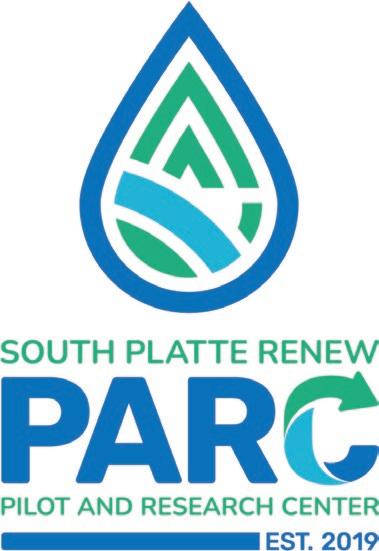
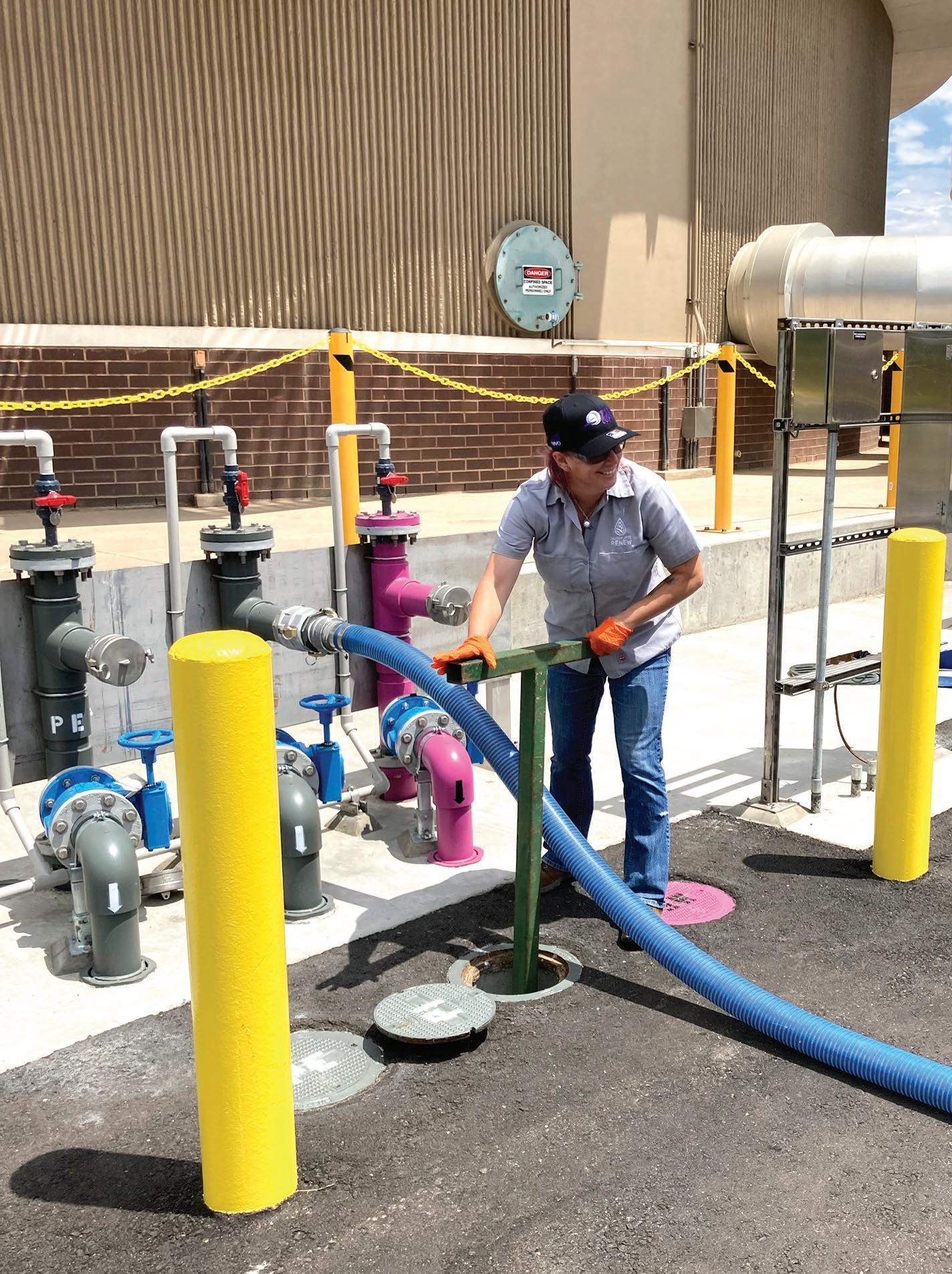
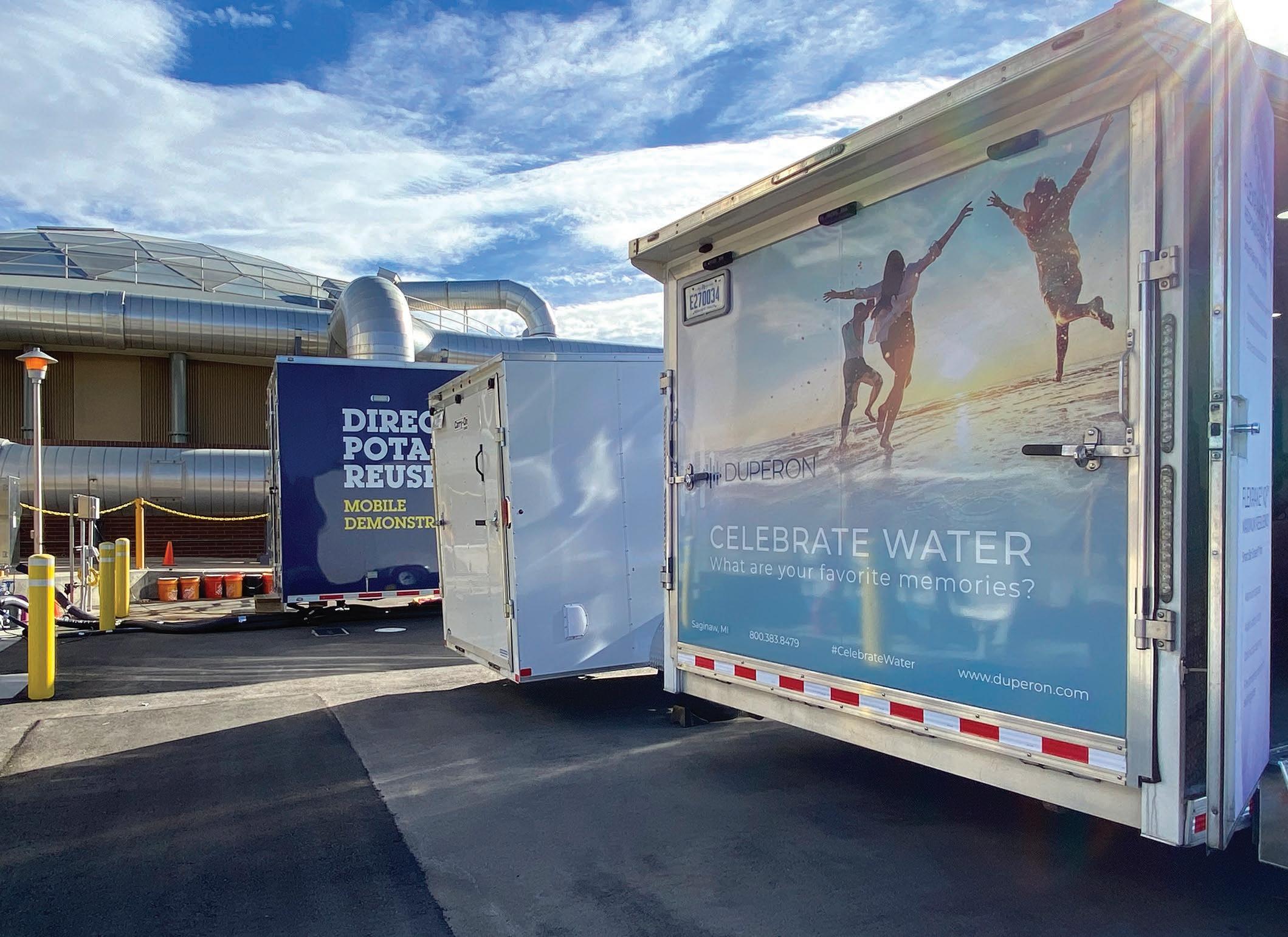
continuous learning and development, bridging the gap between development and implementation.
PARC aims to revolutionize the resource renewal industry by:
• Implementing a utility-driven piloting and research program recognized for establishing innovative and sustainable technologies.
• Helping SPR meet current and future regulations while prioritizing cost-effectiveness for ratepayers.
• Attracting, developing, and retaining an industry-leading workforce.
• Building strong partnerships to collaboratively solve industry-wide challenges.
• Engaging the local community to create a circular economy.
PARC’s physical infrastructure provides access to research, development, and testing of new technologies in SPR’s real-world environment. The site includes a series of piped process flow connections designed for seamless hook-up for partners. To transform PARC from concept to reality, SPR hired Jacobs (design engineer) and PCL Construction, Inc. (contractor), utilizing a Construction Manager/General Contractor delivery method. The project team designed four pilot testing bays equipped with access to various process flows, and electrical, and internet hookups. This setup supports pilot-level projects, enabling the experimentation and validation of cutting-edge methods and equipment before full-scale implementation.
During the development of PARC, the team gathered input from existing water renewal facilities with onsite research facilities, companies with proof-ofconcept-level research experience, and academic perspectives. Despite initial advice to focus on regulatory-driven innovation, SPR believed broadening its approach to promote innovation across the industry was key to PARC’s success. PARC achieves this by:
• Creating a site that provides multiple flow streams to facilitate a variety of pilots.
• Broadening partnership and pilot selection criteria.
• Meeting the resource needs of various industry innovators.
• Fostering an environment and culture of innovation, both at SPR and industry-wide.
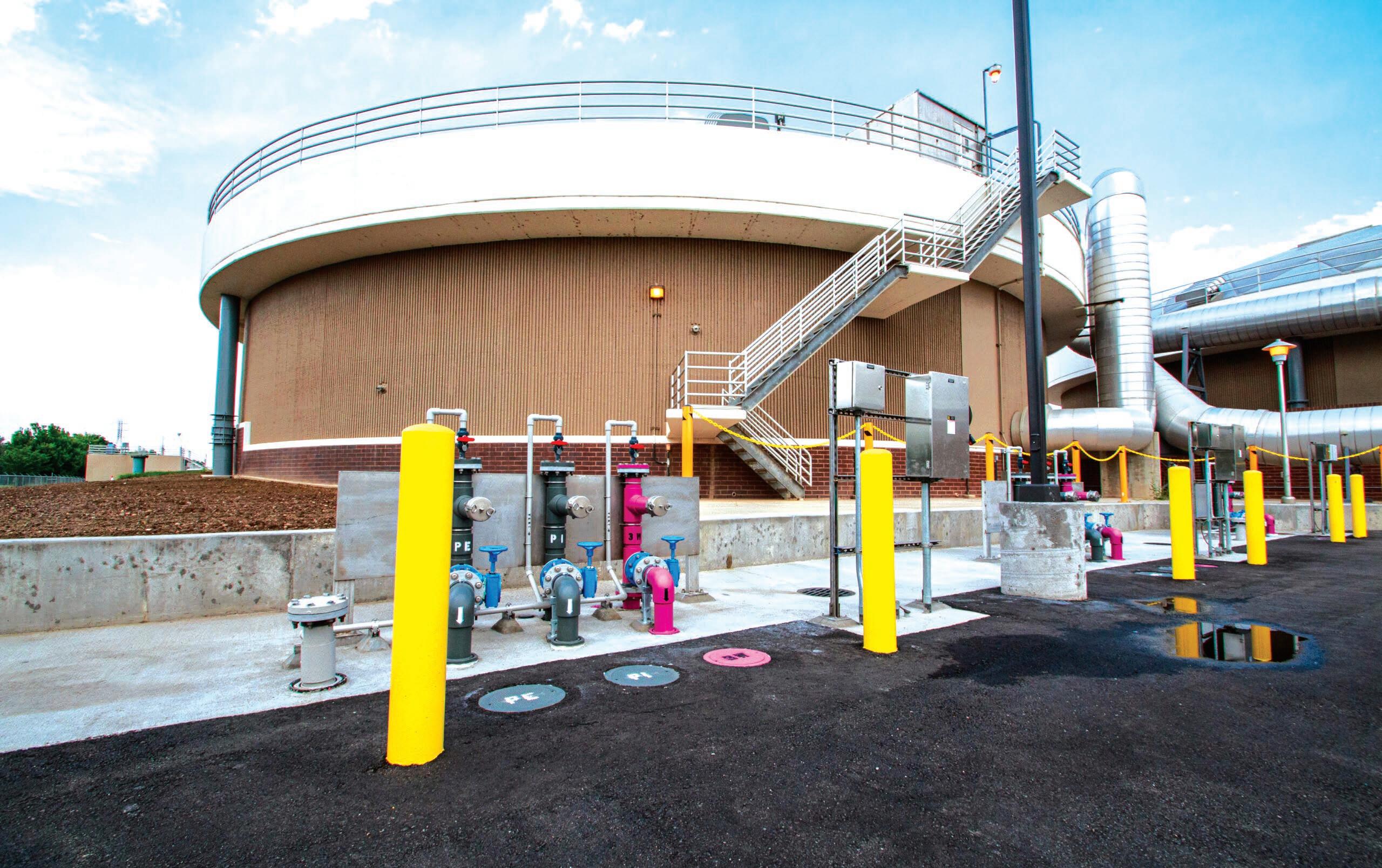
Designed to be inclusive, PARC encourages diverse perspectives, fosters creativity, and ensures that innovative solutions are comprehensive and well-rounded. From small-scale utility management improvements to large pilot-scale technologies, SPR partners
with universities, vendors, consultants, contractors, community partners, industry organizations, and other utilities committed to driving the industry forward.
One of SPR’s focuses is the value of partnering with other utilities, including smaller utilities that may not have the resources to lead innovative projects
independently but may benefit from the advancements and insights gained through PARC’s initiatives. One such utility partnership is with the Cities of Longmont and Boulder to act as Utility Advisors for the Water Research Foundation Tailored Collaboration Project #5276, “Exploring Machine Learning Algorithms to Support
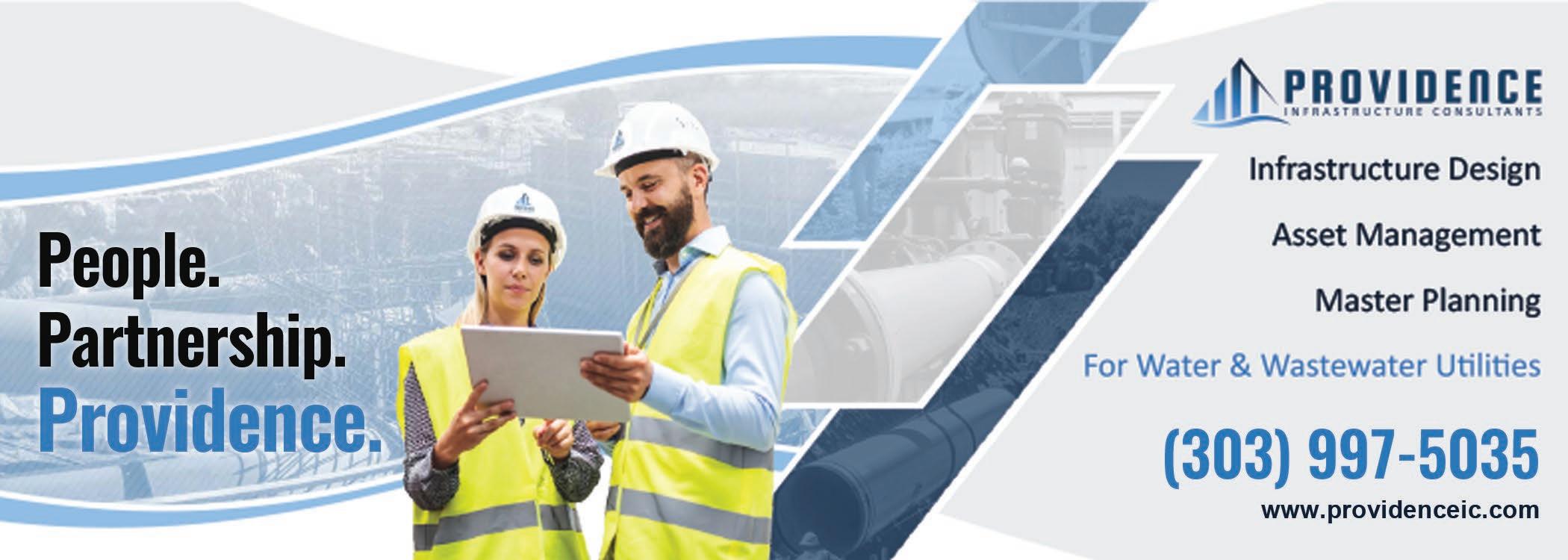
Municipal Wastewater Treatment PFAS
Source Identification and Control Efforts.”
The Utility Advisors will lend their expertise in PFAS source management and guidance on implementing the results, helping to bring academic research into industry practice.
In sharing research findings and successful pilot projects, utilities benefit from shared results, improving their operations and meeting regulatory requirements more efficiently. Collaborating with other utilities also creates a network of shared knowledge and resources, enhancing the overall resilience and adaptability of the wastewater treatment sector. These partnerships ensure that innovations developed at PARC have a broader impact, reaching communities that might otherwise struggle to implement new technologies.
Through its inclusive approach and strategic partnerships, PARC aims to democratize innovation in the wastewater treatment industry. By welcoming contributions from individuals with diverse backgrounds and extending support to utilities of all sizes, SPR ensures the benefits of technological advancements are widely distributed.
By engaging with a broad spectrum of participants, SPR aims to empower the local community. PARC educational programs and workshops are designed to inspire and educate individuals about water renewal and the importance of innovation in this field. This community involvement helps cultivate a culture of curiosity and problem-solving, driving forward-thinking solutions.
PARC also involves local businesses, promoting a circular economy. Since 2019, SPR has collaborated with local whiskey distilleries to use their waste as a carbon source, repurposing it for various treatment processes and reducing the need for external chemical additives. This pilot not only helps local businesses manage their waste but also upholds SPR’s commitment to sustainable practices.
This partnership showcases how industrial by-products can be repurposed and reused, reducing environmental impact and promoting a circular economy within the community.
The benefits of PARC are manifold: it enables SPR to stay ahead of regulatory requirements, optimizes resource usage, reduces operational costs, and provides a platform for industry partnerships to advance wastewater technology.
In PARC’s first year of commissioning, PARC hosted four pilot trailers, ranging from mechanical screening technology to advanced water treatment for direct potable reuse, and facilitated 22 other pilots. PARC stands as a testament to innovation and progress, challenging the conventional approach of waiting for technology to mature before implementation in the reuse sector. Instead, PARC has proactively paved the way for technological advancements, setting a new standard in the field.
If you’re interested in partnering with future PARC research efforts, visit southplatterenewco.gov/pilot-and-researchcenter or email SPRPARC@englewoodco.gov

Anna Schroeder serves as an Engineering Supervisor at South Platte Renew in Englewood, Colorado, where she oversees various types of projects. Along with managing capital improvement projects, her role encompasses developing and managing the Pilot and Research Center Program at SPR and spearheading innovative wastewater treatment projects that focus on waste reduction, energy and chemical savings, and sustainability improvements. With a diverse educational background, including a master’s degree in Civil Engineering from the Colorado School of Mines and dual bachelor’s degrees in Geology and Physical Geography from the University of Colorado, Boulder, Anna has dedicated her career to advancing sustainable and efficient water renewal management practices. She can be reached at aschroeder@englewoodco.gov or 303-783-6884.
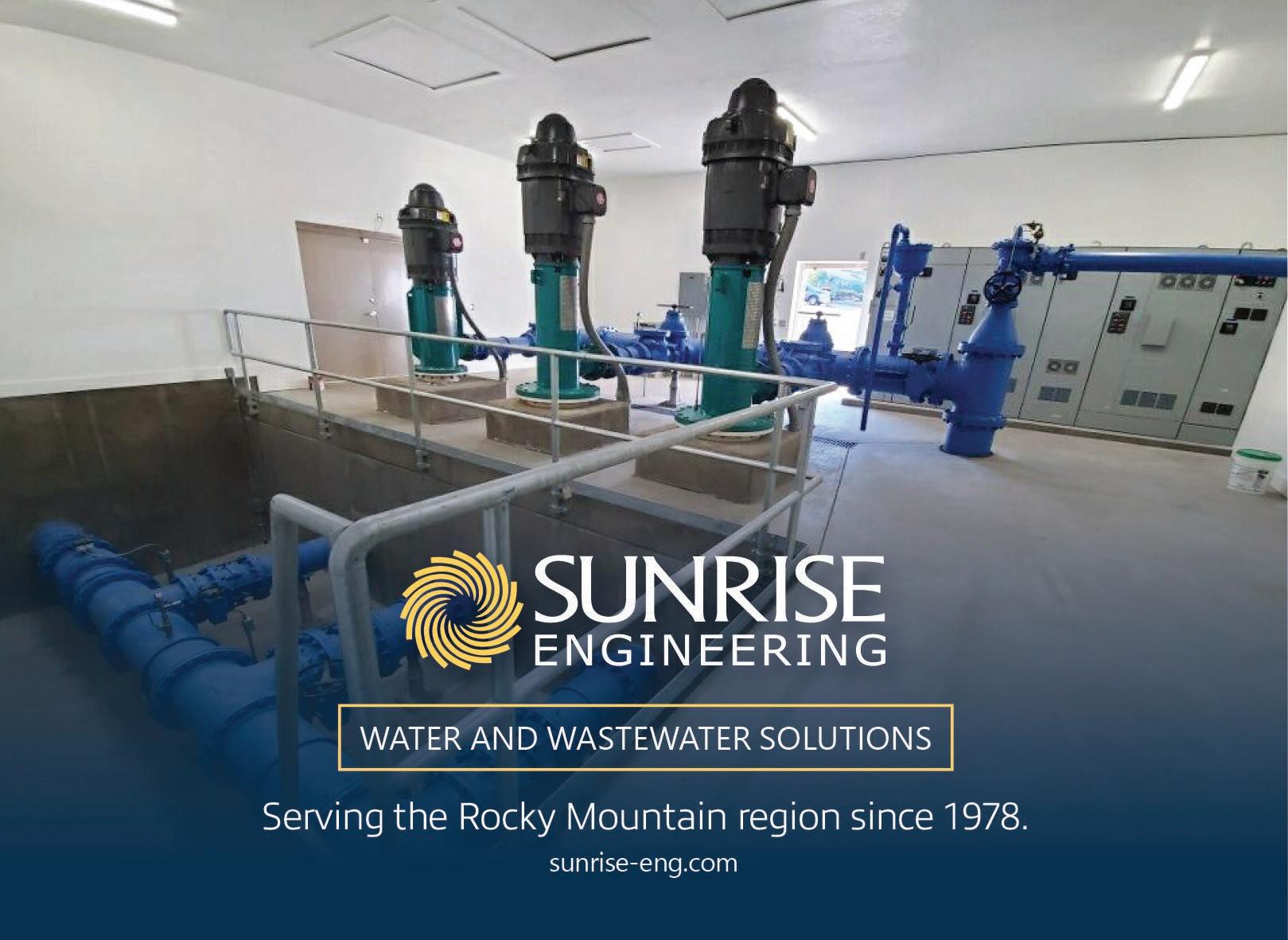













































By Rebecca Tejada, PE and Jo Frank, PE
In 2019, following more than a decade of collaboration, the Lower South Platte Water Conservancy District (LSPWCD) and Parker Water & Sanitation District (Parker Water) formally launched a partnership aimed at providing a sustainable water supply solution benefiting both agricultural and municipal sectors within the South Platte River Basin.
Named the Platte Valley Water Partnership (PVWP), the project’s objective is to address the pressing water needs of both rural farms and urban communities. Leveraging new and existing infrastructure, the PVWP intends to capture and store renewable South Platte River water, primarily during spring and storm events. Sharing the financial burden, Parker Water and LSPWCD will collectively fund the infrastructure development.
The PVWP represents a unique opportunity to bolster water supply reliability in northeastern Colorado and the Front Range. By fostering an enduring
partnership between agriculture and urban areas, the project aims to utilize adjudicated water rights to capture, store, and transport surplus water currently leaving Colorado in quantities exceeding existing South Platte water rights and interstate compact agreements.
While currently in the planning and permitting phase, recent milestones include the submission of an amended water court application outlining various diversion and storage options. Jacobs Engineering Group, Inc. has also been selected as the owner’s agent and will serve on the project team.
The proposed elements encompass a small storage reservoir of up to 6,500 acre-feet, a larger reservoir of up to 72,000 acre-feet, and potential utilization of existing storage facilities. Construction is slated to commence in the late 2030s, with water conveyance expected by 2040.
Additionally, in late 2023, the PVWP acquired over 200 acres of land in Morgan County adjacent to the North Sterling Reservoir inlet diversion. This parcel is slated to potentially serve as a forebay for diverting available South Platte water to a new, proposed reservoir




near Akron in Washington County. Water diverted to the new forebay can be stored and used as a future supply directly or used in aquifer recharge basins for the LSPWCD. It can also be delivered directly to Parker’s Reuter-Hess Reservoir.
Until the forebay is constructed, PVWP partners plan to keep this land productive by leasing it as a dryland farm, delivering water to irrigate the acreage for farming, or planting vegetation on the property to create sustainable wildlife habitat.
• Small storage reservoir near Illiff (up to 6,500 acre-feet)
• Large storage reservoir near Akron (up to 72,000 acre-feet)
• Forebay reservoir (for diversion and recharge)
• Reverse osmosis water treatment facility for desalination.
• Approximately 125 miles of pipeline and five pump stations for transportation to Rueter-Hess Reservoir in Douglas County and delivery within LSPWCD.
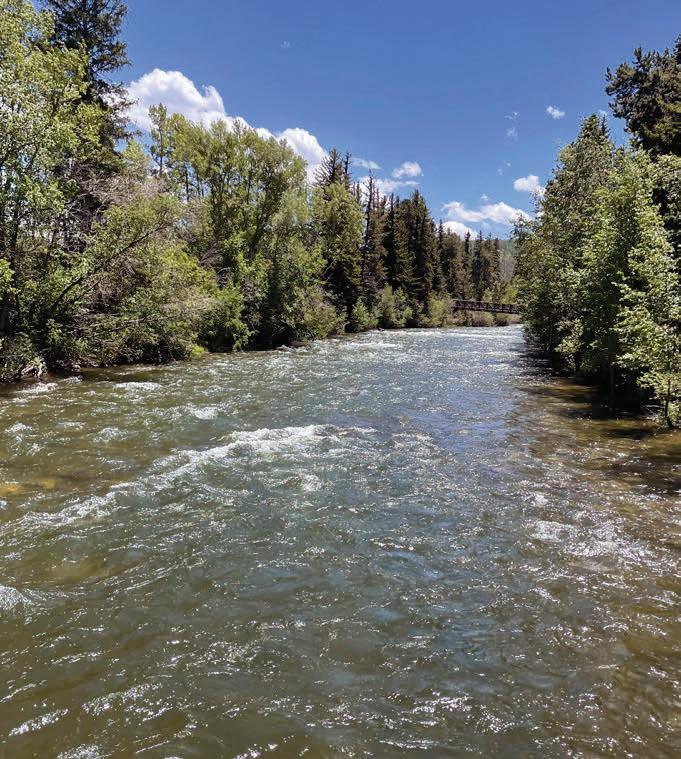
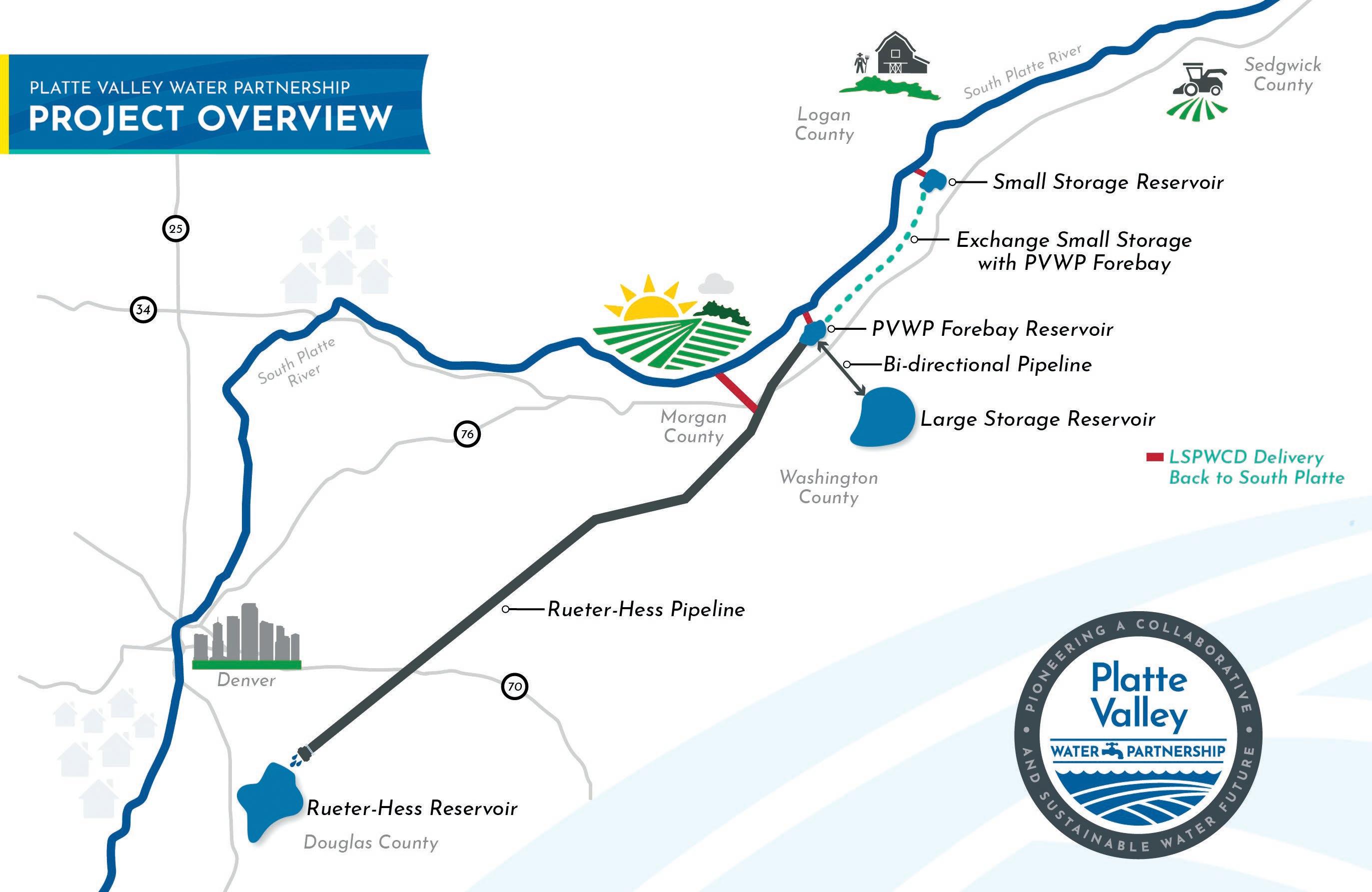
In addition to meeting the future water needs of both agricultural communities and Parker Water customers, the PVWP has additional benefits from local communities and the environment. Key benefits include:
1. Protecting agriculture: The PVWP protects agriculture by preventing new buy-and-dry water through its infrastructure and providing muchneeded water to northeast Colorado farms. The project would give LSPWCD water users access to a new water supply of 17,000 acre-feet annually.
2. Transitioning to sustainable water: While current water resources are sufficient for existing Parker Water customers’ needs, the population it serves is projected to double by 2040. Parker Water aims to build a water resource portfolio that is at least 75% renewable. The PVWP would allow Parker Water to access more than 20,000 acre-feet of reliable, renewable water annually.
3. Regional economic benefits: There will be regional, short-term economic benefits from construction activity and long-term
benefits resulting from developing a new water supply that addresses local shortages. Reservoir recreation will also provide economic opportunities.
4. New habitat: Off-channel storage will protect the river, and the new reservoirs will provide new wildlife habitats. When finished, the PVWP will enhance the reliability of the water supply for agricultural uses in northeastern Colorado and municipal needs for Parker Water customers in Douglas County. The PVWP is a key part of Parker Water’s strategic long-term plan to meet future demand.
Estimated costs for the entire Platte Valley Water Partnership project are approximately $880 million. $560 million is built into Parker Water’s long-term planning and rate structure and would be adequate to complete the first phase. PVWP partners are currently in discussions with additional entities who may be interested in increasing infrastructure capacity to develop additional water supplies and reduce overall project costs.
The project has received support from local and state elected officials, members of the environmental community, and various
water reporters across Colorado. The PVWP epitomizes the collaborative spirit outlined in Colorado’s Water Plan; the project is poised to set a precedent for infrastructure development and water sharing. This initiative strives to sustain the prosperity and resilience of urban and rural communities by ensuring equitable access to water resources.
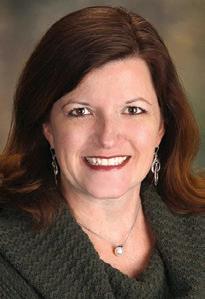
Rebecca Tejada, PE, is the Director of Engineering at Parker Water & Sanitation District. A graduate of the University of Michigan, Rebecca has been with PWSD since 2013.

Jo Frank, PE, is the General Manager of the Lower South Platte Water Conservancy District. A graduate of Colorado School of Mines, Joe has been with LSPWCD since 2004.
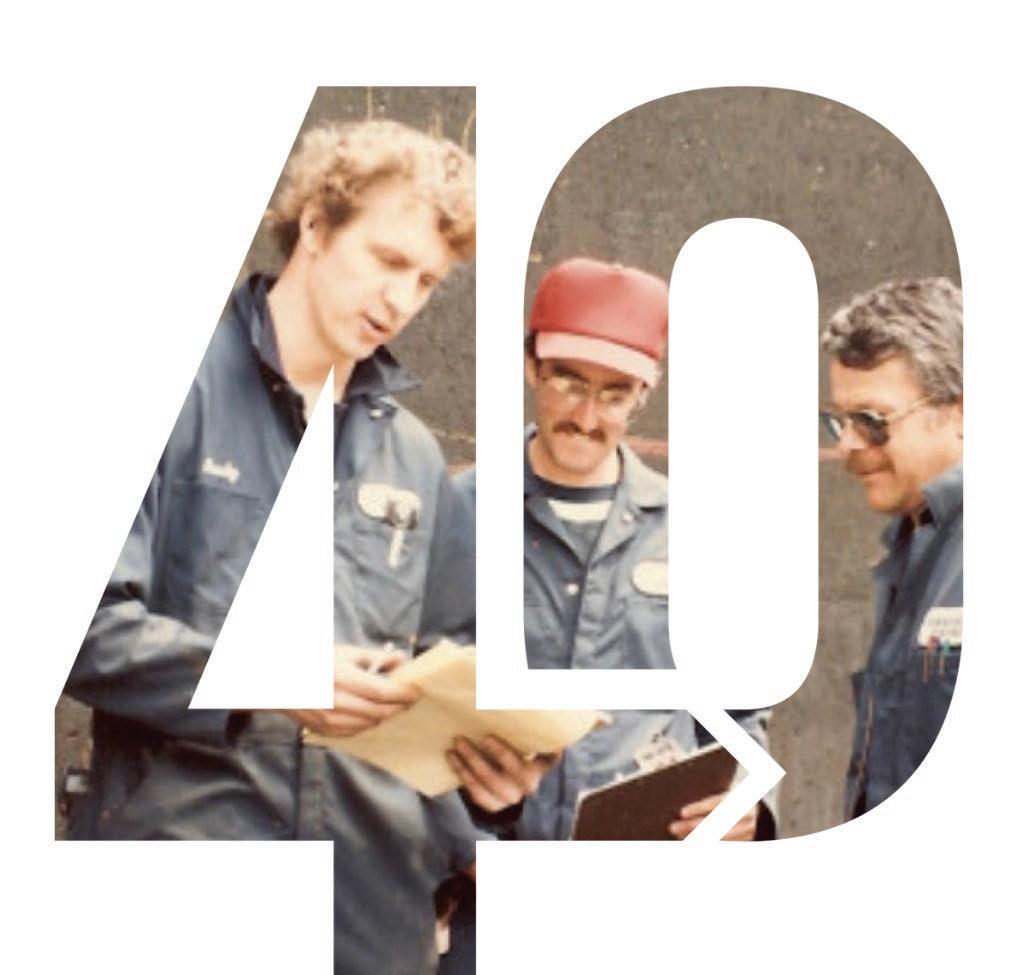
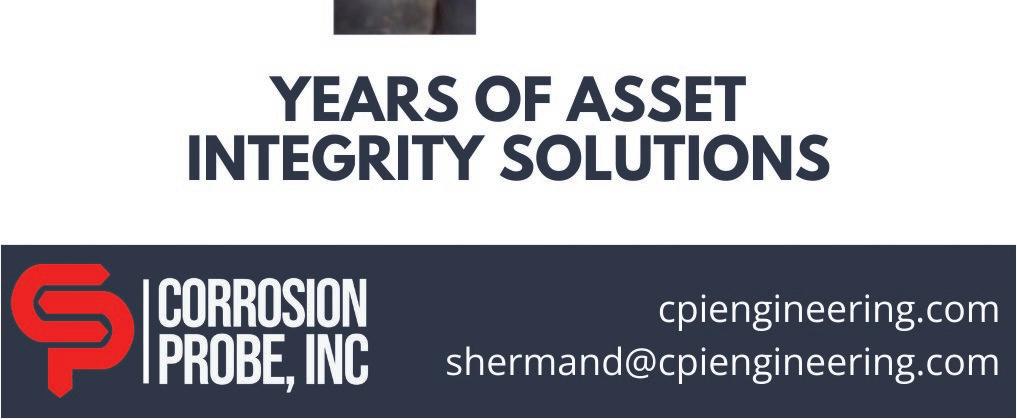

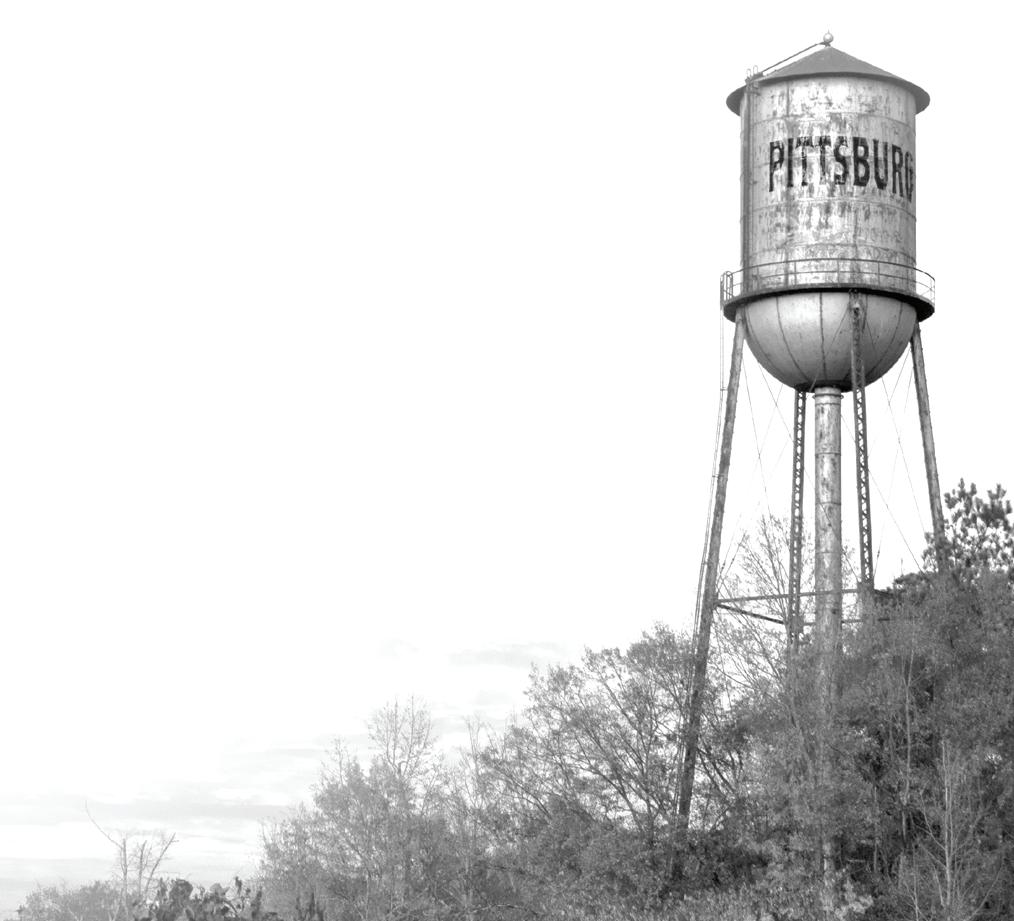
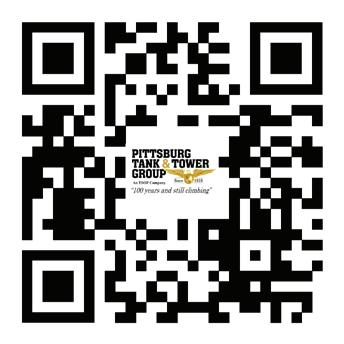





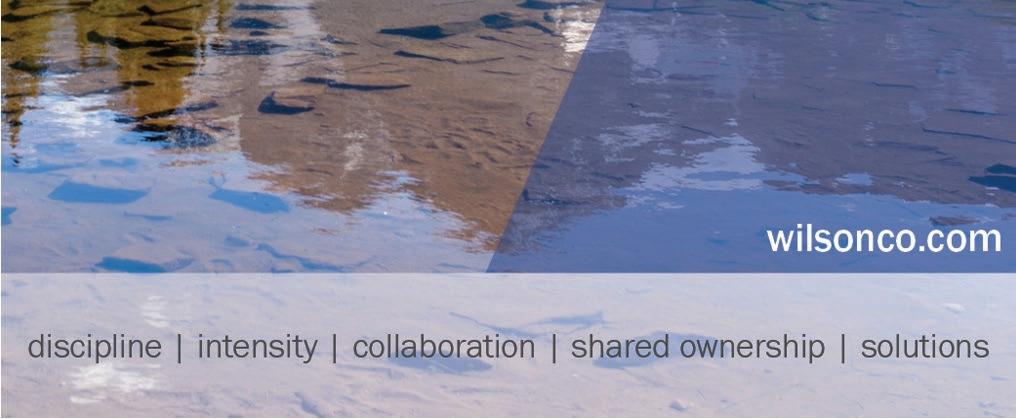








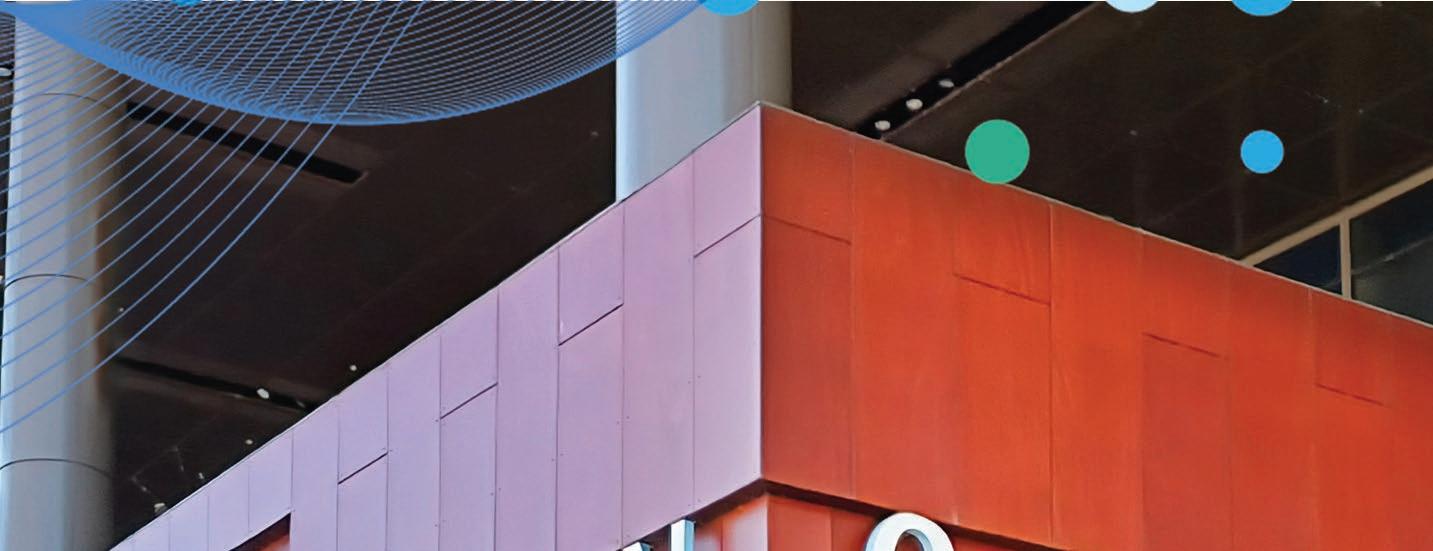





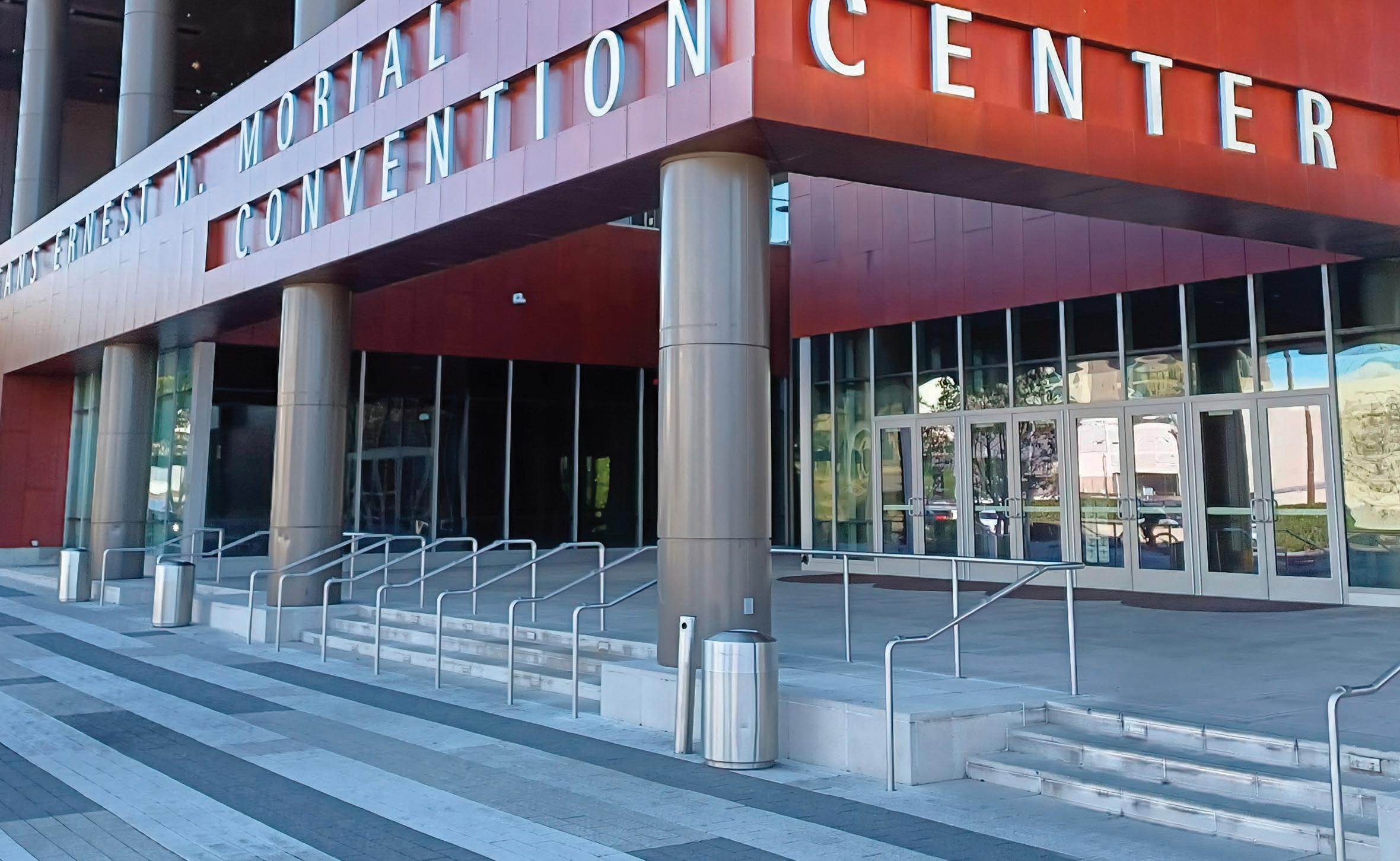

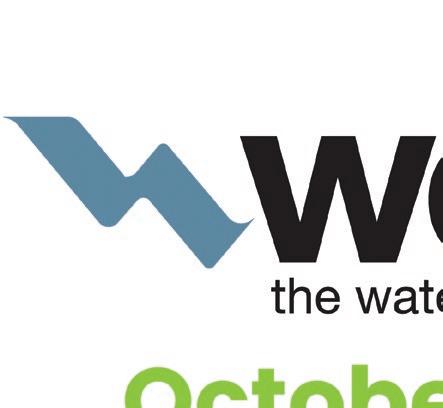



97th Annual Technical Exhibition & Conference
Ernest N. Morial Convention Center
New Orleans, Louisiana USA
Conference: October 5-9, 2024
Exhibition: October 7-9, 2024
At WEFTEC, you can transform those connections into real-world collaboration. Here’s why you should be there.
At WEFTEC, you can:
• Connect with passionate water professionals from across the country and around the globe.
• Deepen your knowledge through technical sessions and interactive learning exchanges.
• Explore the latest innovations and technologies while engaging with vendors and technical experts.
• Access a diverse range of equipment suppliers conveniently gathered in one location.
• Earn Continuing Education Credits (CEUs and Professional Development Hours (PDHs).
• Cultivate your career prospects by networking with peers and potential employers.
• Experience the thrill of Operations Challenge firsthand.
Be part of the energy and excitement at the water sector’s premier event and leave inspired!
Register at www.weftec.org/register.
See You in New Orleans, October 5-9.

As an attendee, you’ll have access to… EDUCATIONAL CONTENT
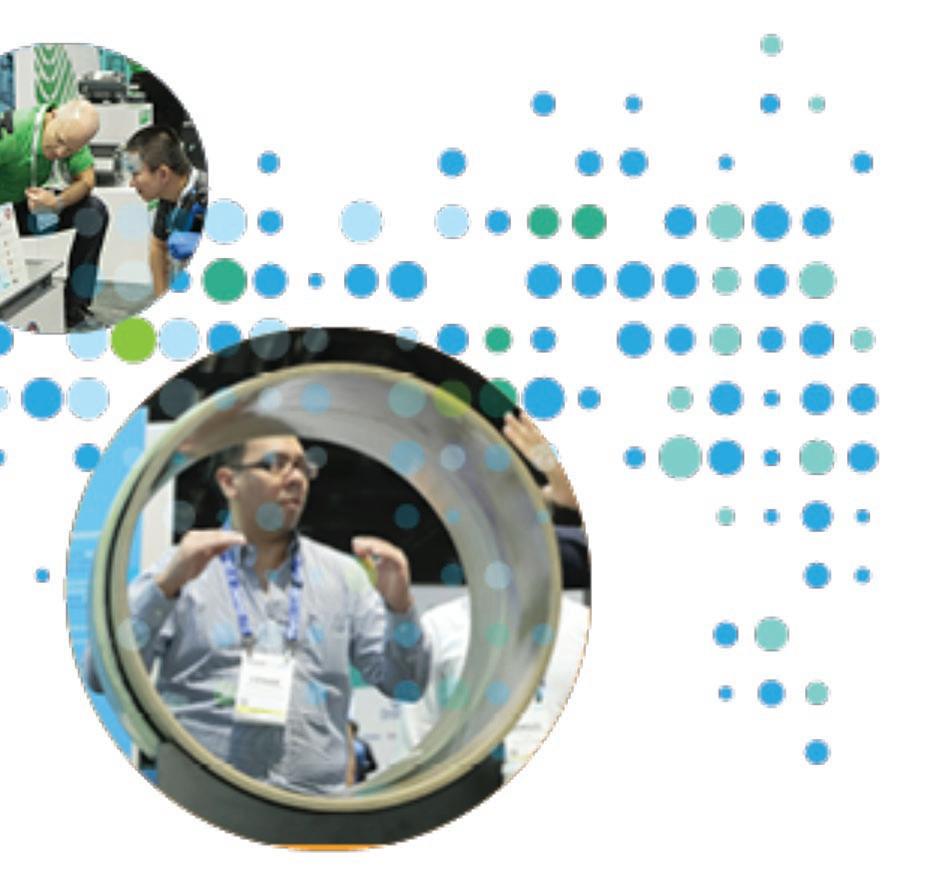
Whether you’re looking to drill down into specific topics in wastewater treatment, find solutions around zero liquid discharge, or stay updated on collection system trends, WEFTEC offers valuable learning opportunities for anyone working in the water sector. Check out the Schedule at a Glance, Technical Sessions, Workshops, and Facility Tours.
With over 800 exhibitors on site, WEFTEC showcases the latest innovations, technologies, and solutions in water quality management. In the nearly sold-out exhibit hall, you’ll get hands-on experience with the latest technologies and engage in a directory with the supplier teams to solve your most challenging issues.
From the exhilarating Operations Challenge Competition to the prestigious WEF Awards Ceremony, WEFTEC offers a diverse range of unique events that entertain, inspire, and educate.
From Continuing Education Credits to our Affinity groups, you’ll immerse yourself in a dynamic environment where creativity thrives, and collaboration flourishes. Attendees also earn continuing education credits, gain insights into career advancement opportunities, and stay informed about the latest job trends in the water sector.
By Shannon Harney, South Platte Renew, Engineer II
South Platte Renew (SPR) is the third largest water resource recovery facility in Colorado, treating approximately 17 million gallons of residential and industrial wastewater each day. SPR receives hundreds of visitors to the plant site each year for tours, pilots, design, and community events. The industrial facility continuously operates 365 days per year thanks to the dedicated team of nearly 90 employees working at SPR. As an established facility, SPR executes diverse construction projects ranging from
electrical installations to the complete revamping of processes. However, these ventures come with inherent risks, exposing employees to hazardous processes, equipment, and situations regularly. Over the years, the safety program at SPR had grown stagnant, leading to disengagement and culminating in a significant near-miss incident at the facility. While staff knew safety was vital to operations it was often an afterthought and the correct resources and procedures were not in place to conduct plant activities safely.
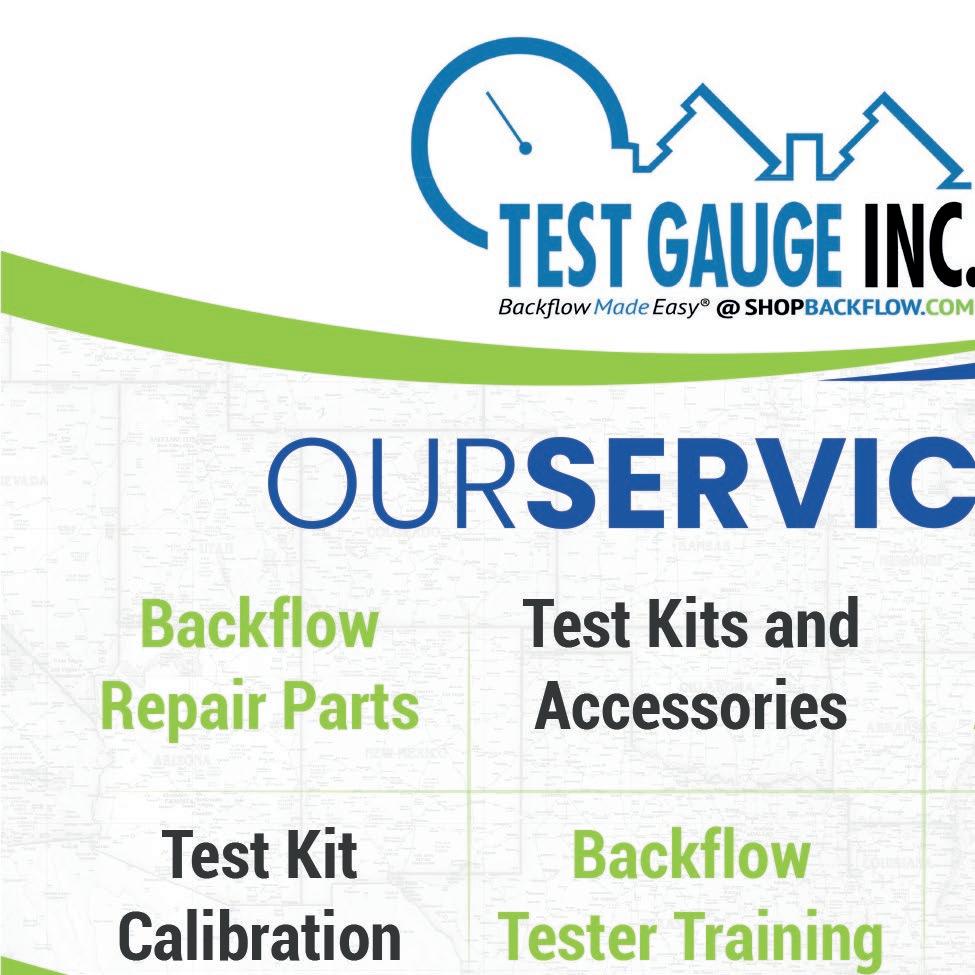


SPR was faced with the challenge of revitalizing a struggling safety culture and ensuring safety remains a constant focus for all employees while maintaining all operations and construction at the facility.
In a determined effort to address this issue, SPR enlisted the services of Brown & Caldwell (B&C) to help develop a brand-new safety program. This collaboration aimed not only to address safety’s technical aspects, including policies, procedures, and resources but also to embed safety into the organizational culture. When SPR began this process the end goal or program was not clear, but what held true was that the safety program would not be complete unless it became integral to the culture at SPR and was something people could feel every time they stepped on site. Critical to this process, SPR comprised a project team including members of all departments to ensure a diverse range of voices were heard.
The project included a technical and cultural gap analysis, created a safety brand to increase awareness, and developed a five-year implementation plan to continually improve safety at SPR. In December 2022, SPR launched its new safety program, “SPR Safe,” which ensures that all employees and stakeholders have the resources, training, and knowledge to complete their jobs safely. Moreover, SPR Safe is not just a program but a cultural shift embraced by staff and anyone entering the plant site. It doesn’t just provide the resources necessary to complete work safely including PPE, policies, and permits but rather is a culture and atmosphere anyone who steps onto the SPR facility can feel.
Integral to the process and the longevity of the program was the development of safety branding, the SPR Safe logo was leveraged to make sure safety was apparent as soon as anyone stepped onsite. It was placed on all construction signage, added to any construction documents or presentations, and new SPR-branded apparel was distributed to all staff.

Through this entire process, SPR has learned many lessons that other utilities could utilize when considering safety or developing any program. First and foremost, the importance of simplicity and clarity. It is imperative to implement procedures that make it easier to incorporate safety into people’s jobs and
make expectations clear, so all staff know their roles. In addition, the inclusion of all work groups and developing a program with staff’s ideas and concerns at the forefront is critical to its acceptance. Finally, the greatest realization was that complacency is a killer. A safety program, or any program for that matter, requires continual improvement and upgrades to keep it up to date, keep staff engaged, and keep processes accurate. While setting up initial safety policies and procedures is important, it is not enough to continue a successful program.
Continual improvement, review, and updating are vital to the longevity and success of the program.
Since 2021, SPR has gone from a state of complacency and apathy leaving staff and the facility as a whole at a risk for accidents to an integrated culture of safety felt throughout all business areas. In a


recent survey conducted with SPR staff, the majority of staff felt that safety had improved significantly since the SPR Safe rollout, noting it was now “top of mind,” “resources are easy to use,” and there is overall a stronger culture and better buy-in. SPR staff continue to improve and update the SPR Safe program to ensure it remains an integrated and effective part of SPR.

Shannon is an Engineer at South Platte Renew, her focus is on asset management, program development, and energy efficiency. She graduated from Colorado State University with her bachelor’s in Environmental Engineering with minors in Sustainable Watersheds and Global Environmental Sustainability.
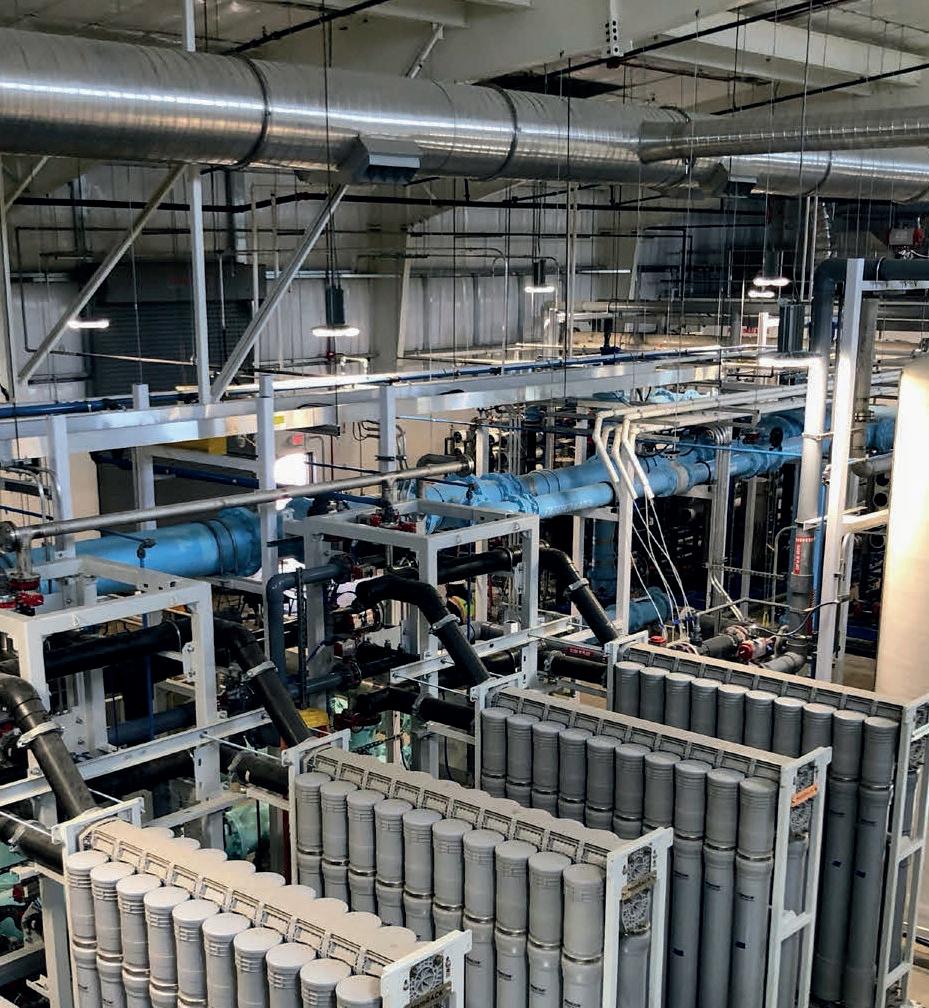
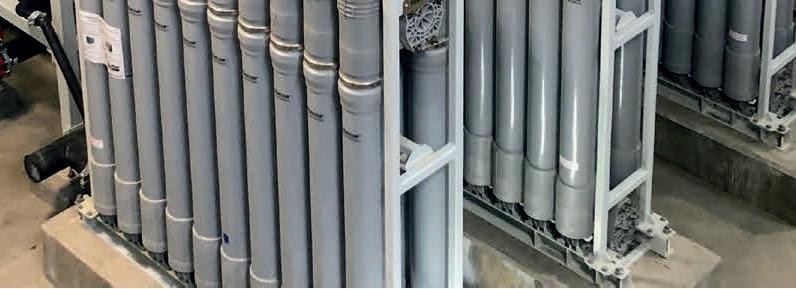


What was once innovative is now a necessity and water providers across the Rocky Mountain section are taking action to transform water-thirsty turf to low-water landscapes. Cities, water providers, and non-profit organizations are making great strides to cut water use from Albuquerque to Greeley. Since the last issue of Rocky Mountain Water, a flood of project update submissions was received through Quick Connections – a quick, easy way to share a summary of current projects. Nine of the submissions focused on projects encouraging low-water landscapes.
1. The City of Westminster is piloting a turfto-native grass landscape transformation program. The goal is to work with three to four HOAs per year to convert large areas of non-functional turf into a Colorado-friendly landscape.
2. Western Resources Advocates and WaterNow Alliance are working on a multi-faceted project to provide direct assistance to three partner communities
and develop helpful resources to enable large-scale nonfunctional turf replacement projects and programs. Resources include partner community case studies, turf replacement scenario water savings and economics analysis tools, turf conversion database, reports on financing options, artificial turf, and HOA common areas.
3. The City of Fountain and the WaterNow Alliance have partnered to create a pilot-ready program to financially incentivize the conversion of high-water turf into low-water landscaping on commercial, industrial, and institutional (CII) properties city-wide. The program will not only address the pressing need for water conservation in Fountain but will foster inclusivity by tailoring support to low-income and hard-to-reach commercial customers.
4 The City of Greeley’s water conservation division is seeking methods to bring further equity to customers through a new program called Low-Income Landscaping Assistance Collaboration. The goal is to

provide essential water-efficient resources to low-income households and nurture community pride one property at a time.
5. The Albuquerque Bernalillo County Water Utility Authority is embarking on an effort in collaboration with the WaterNow Alliance and Pacific Institute to define non-functional turf, perform spatial analysis to determine how much non-functional turf is in their service area, and develop a roadmap to transform at least 30% of non-functional turf to desert-friendly landscaping – including developing a plan for how to pay for this program.
6. Resource Central is developing a pilot program focused on helping HOAs and commercial properties remove large areas of turf, greater than 5,000 square feet. Resource Central is working on identifying the biggest barriers to turf conversion in the hopes of providing services that can help alleviate these challenges. Resource Central is an environmental nonprofit dedicated to helping people save water, reduce waste, and conserve energy.
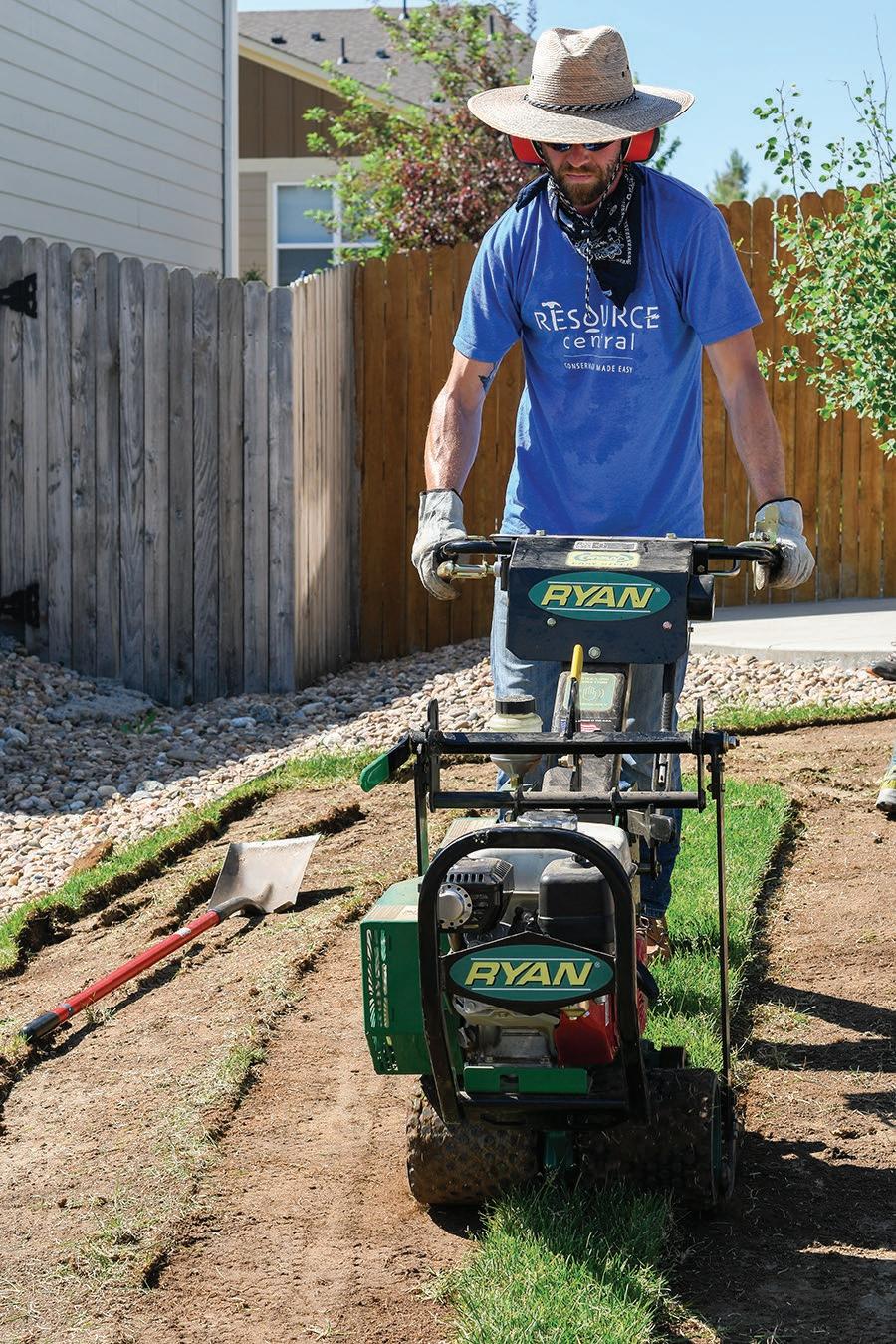
7. The City of Longmont is partnering with the WaterNow Alliance to build on and complement its ongoing residential turf removal rebate program by establishing a data-driven target for reducing non-functional turf on city-owned property. Increasing water-efficient and climate-appropriate landscapes will enable the City of Longmont to decrease outdoor water demand and move towards the conservation goals outlined in its water efficiency master plan.
8. The City of Thornton provides a do-it-yourself guide for homeowners to convert turf to more water-wise options. It includes resources and steps to guide customers on how to go about planning, removing turf, replacement, and maintenance. The do-it-yourself guide is a great tool for customers to use for their future turf replacement projects. View the guide on their website at thorntonwater.com/h2overhaul/.

9. Colorado Springs Utilities took a different approach with its turf replacement program to help customers install native grass lawns. Rather than giving an incentive, they provided education, resources, and most importantly, native grass seed. In the first year, Colorado Springs Utilities had more than

90 participants install more than 160,000 square feet of native grass lawns. To learn more about any of these projects, visit the websites of the various cities, water providers, or nonprofits mentioned. If you have a project update you’d like to tell us about, please scan the Quick Connections QR code.






Rocky Mountain Water is made possible by the companies below who convey their important messages on our pages. We thank them for their support of RMSAWWA and RMWEA and its publication and encourage you to contact them when making your purchasing decisions. To make it easier to contact these companies, we have included the page number of their advertisement, their phone number, and, where applicable, their website.




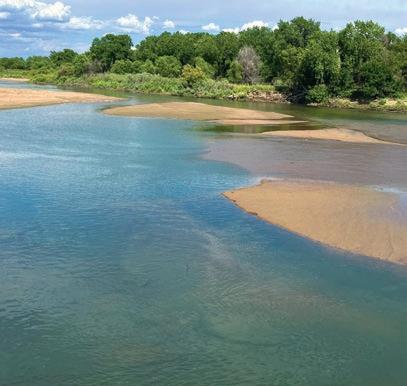




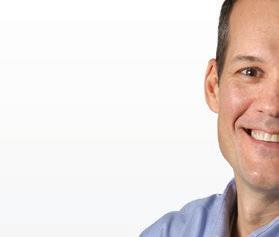



















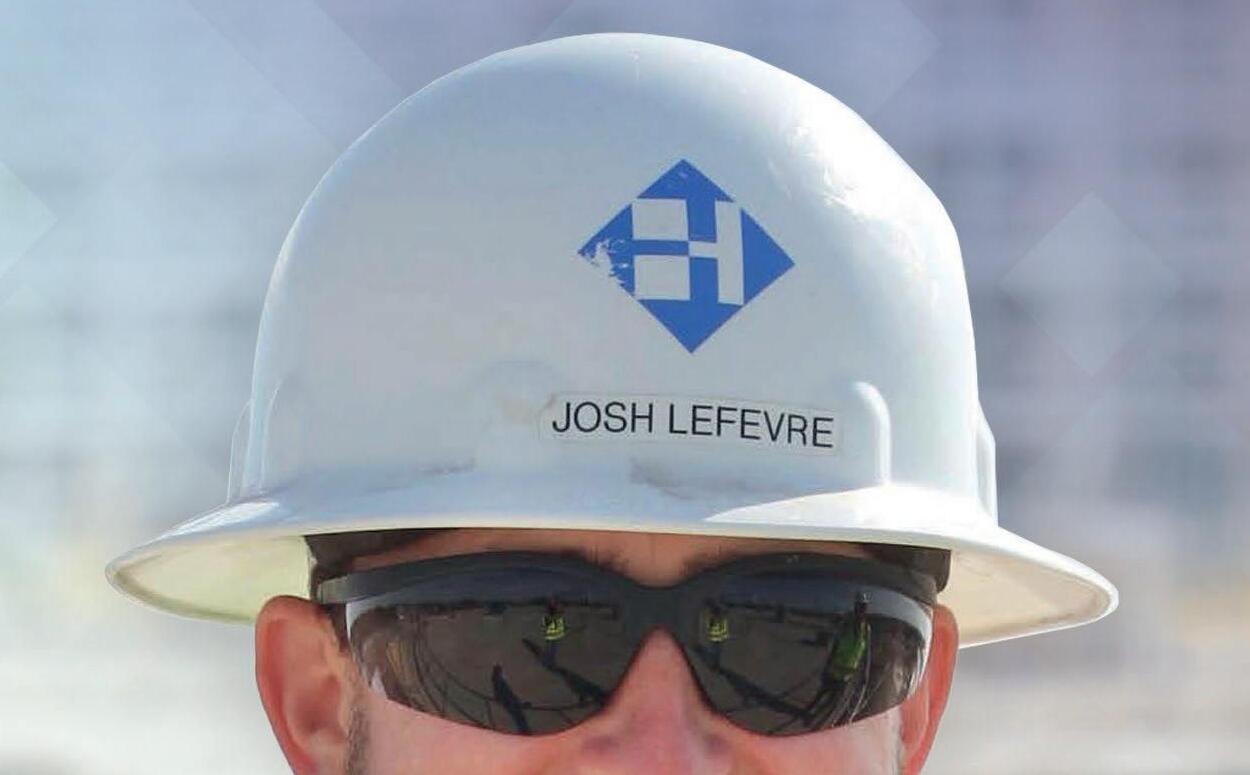















100%







COLLABORATIVE DELIVERY



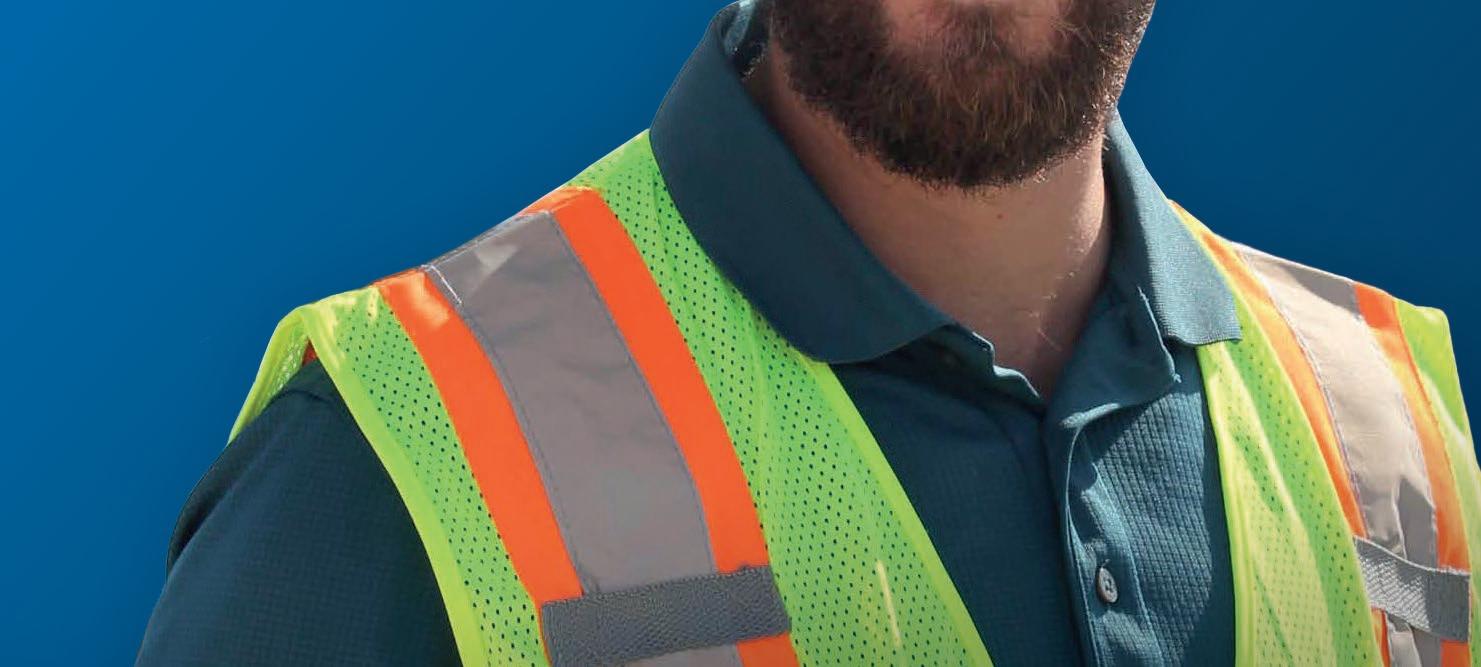








Through Haskell’s in-house craft labor team, we build water treatment facilities with integrity, excellence, and a commitment to exceeding expectations. The key to our self-perform resources is strategic deployment across the U.S. with ample capacity to get the job done anywhere at any time. Let’s create something extraordinary together.
Design-Build | CM/GC | CMAR | Progressive Design-Build | Preconstruction Services




Scan to learn more about our commitment to you. We Create Things That Matter.




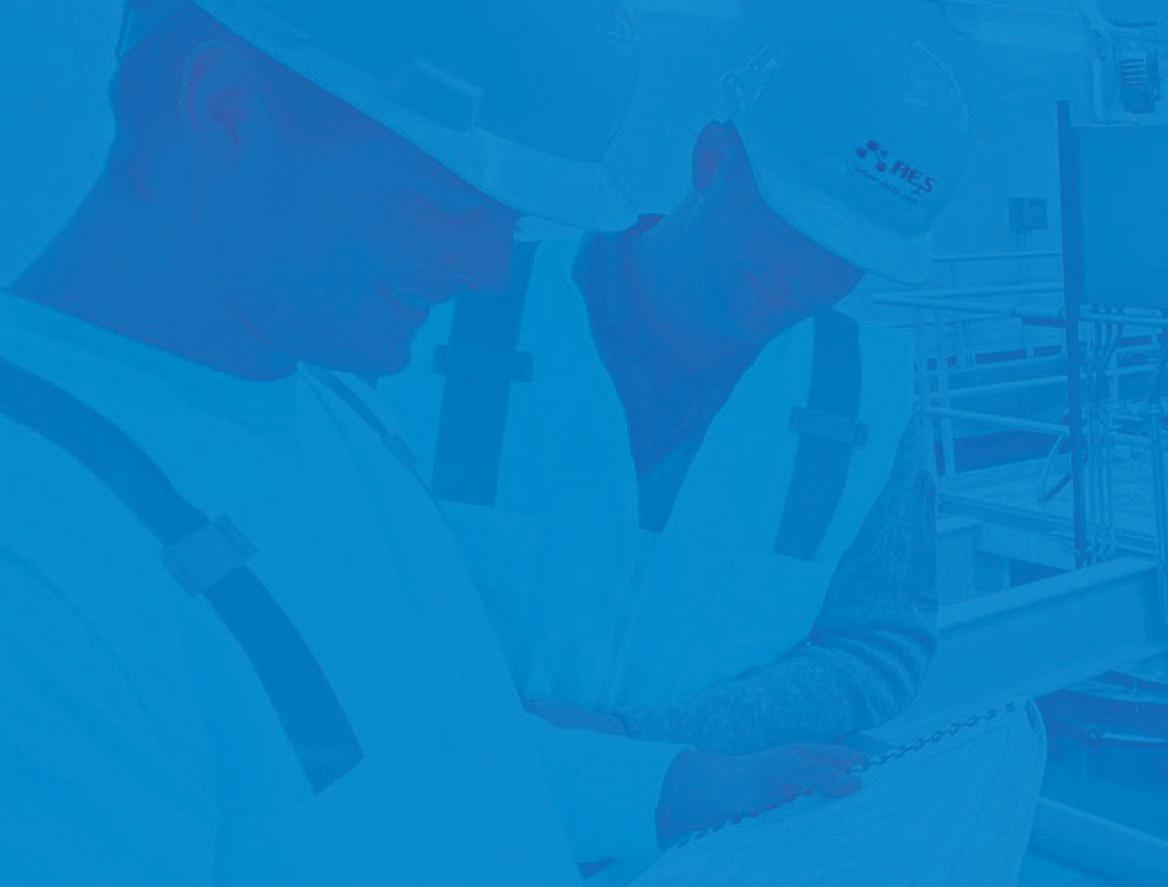
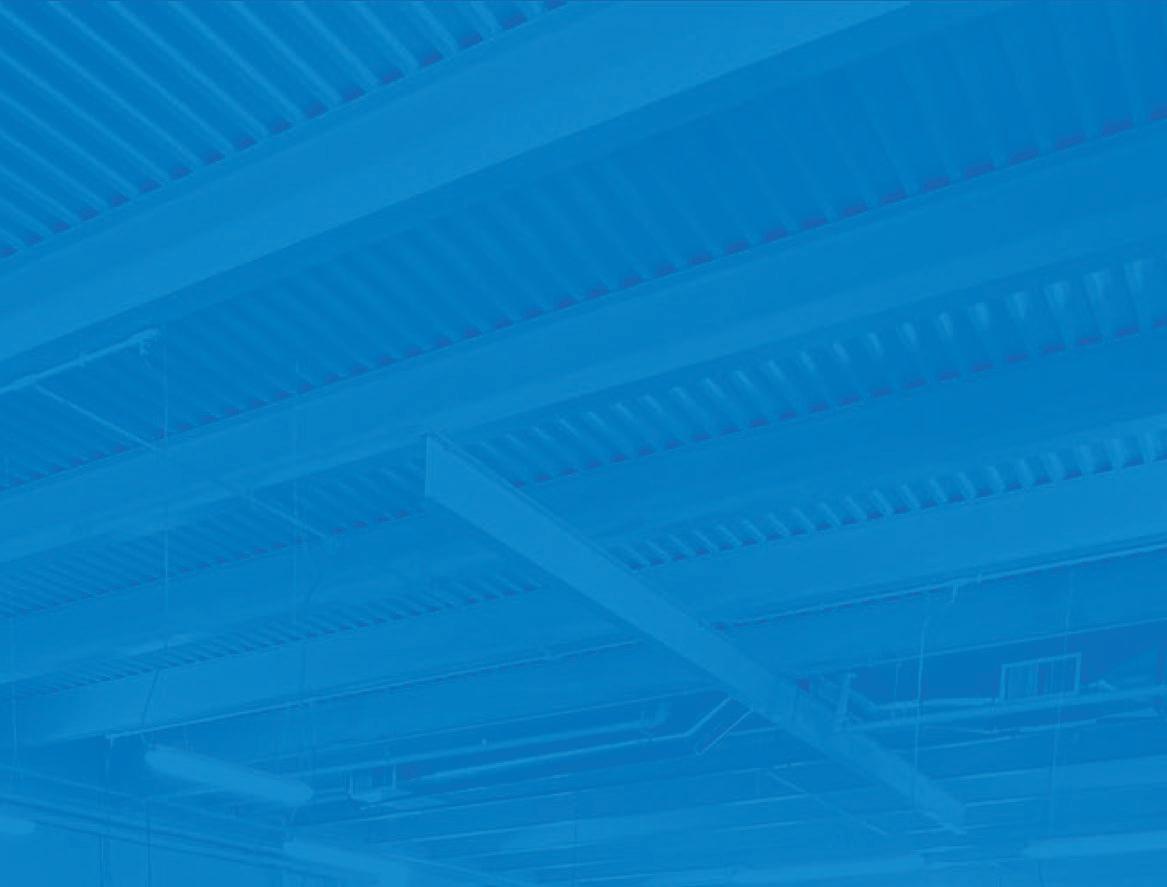
At our very core, AE2S is all about people. Beyond engineering, we are committed to empowering our clients, employee-owners, and all those around us to develop a vision for a better tomorrow.

